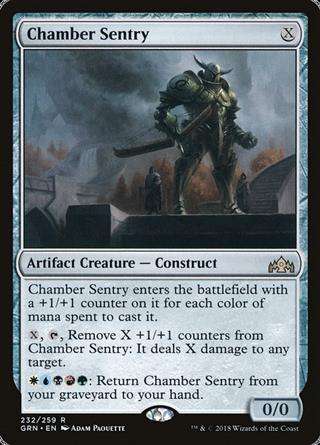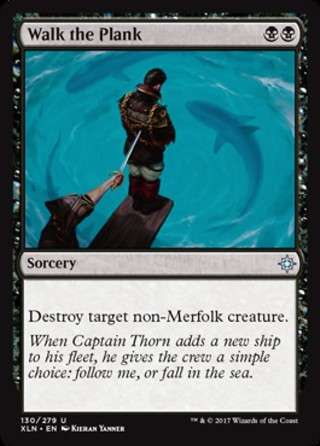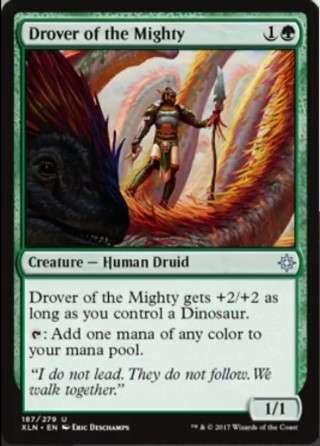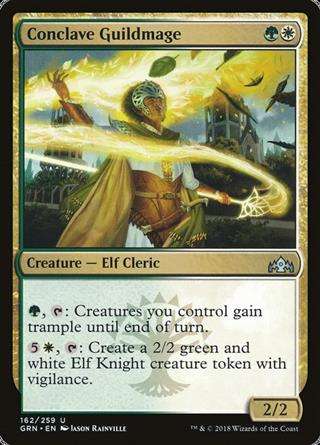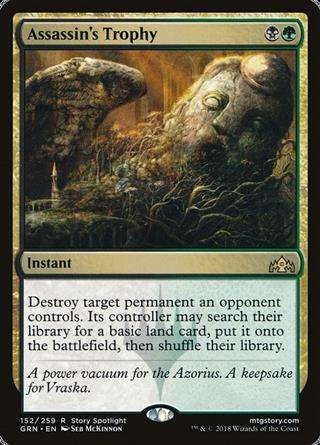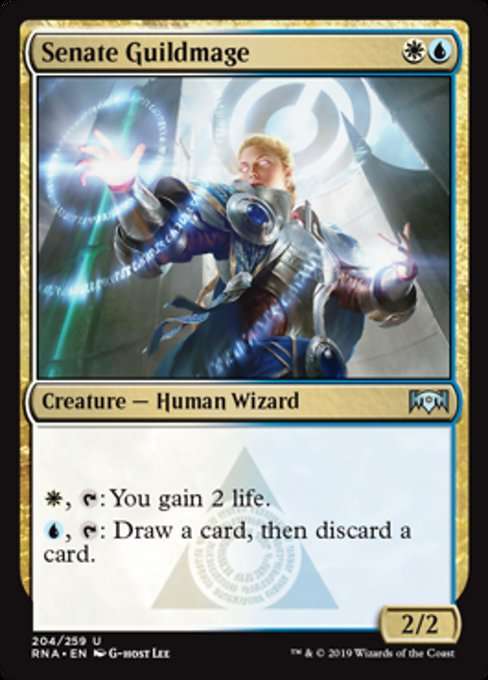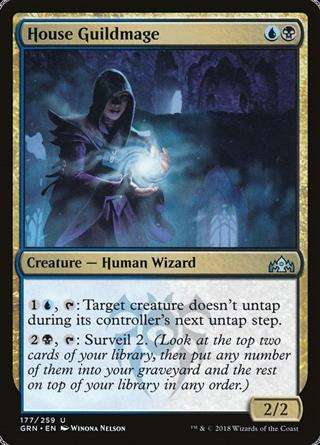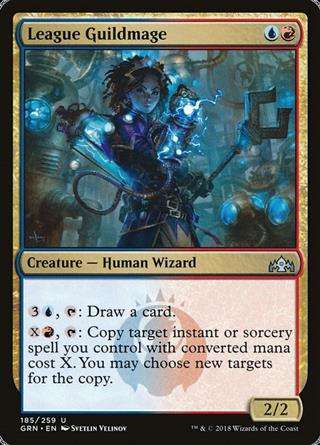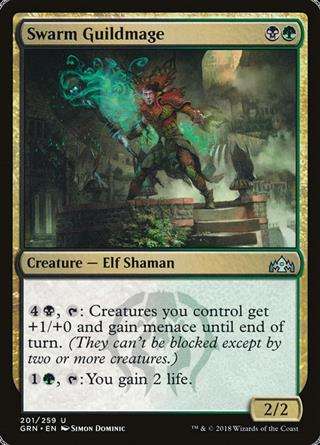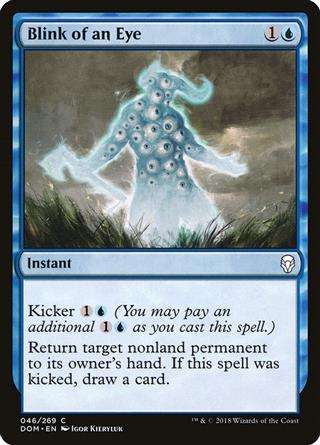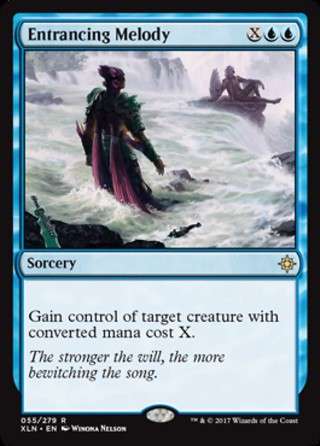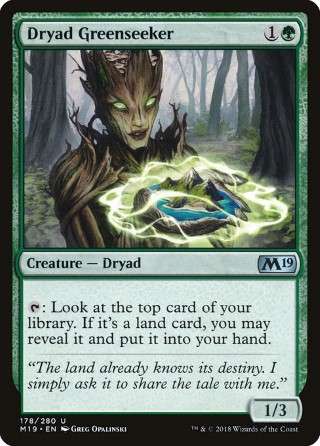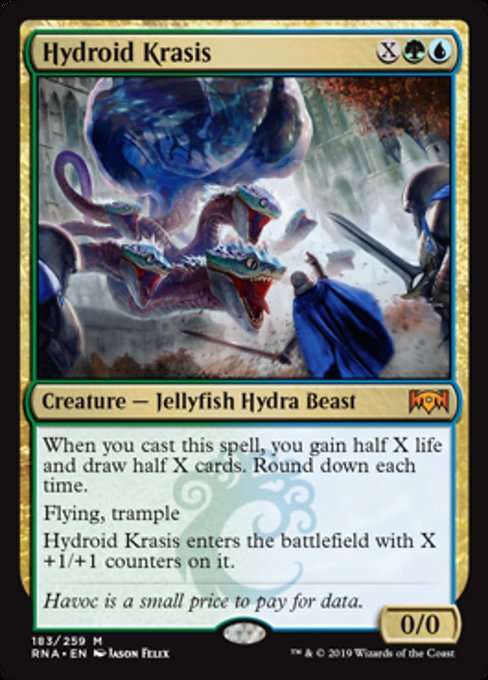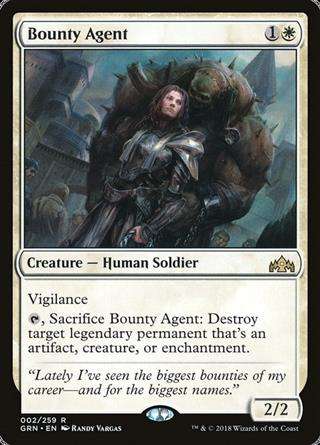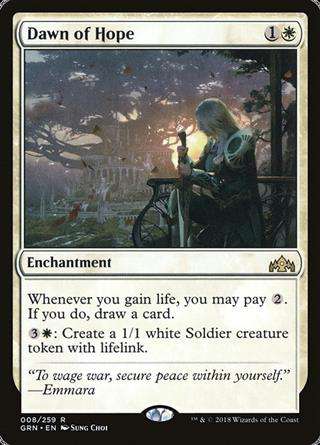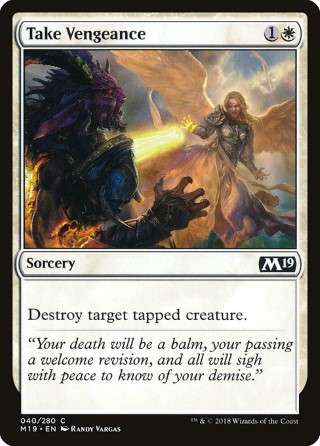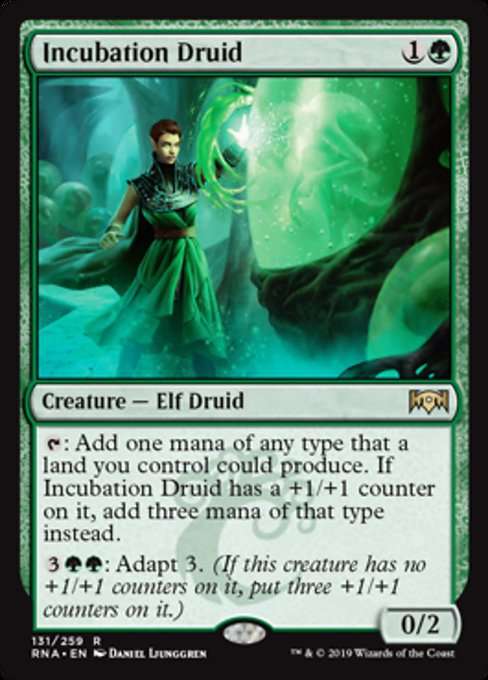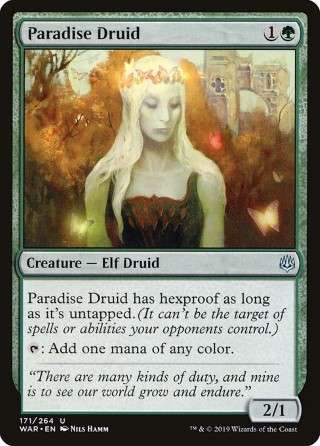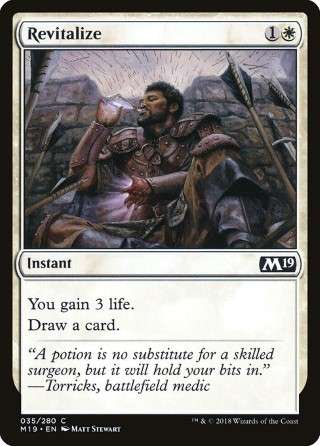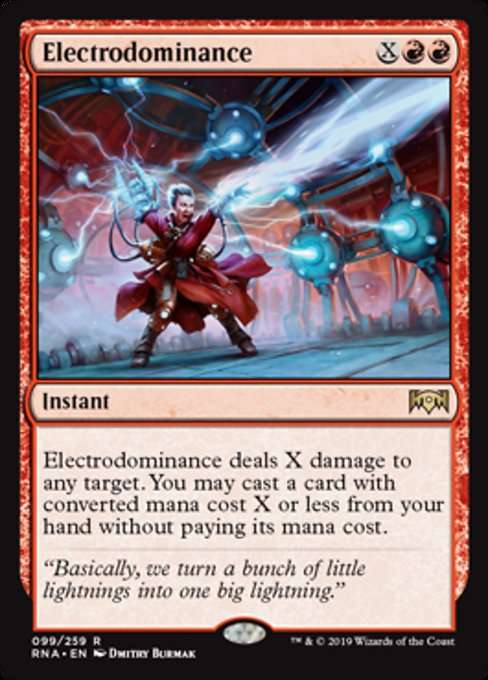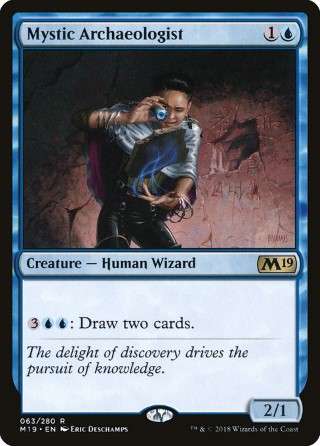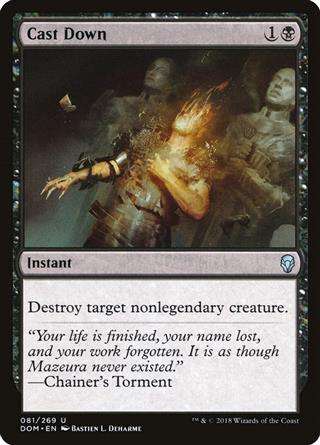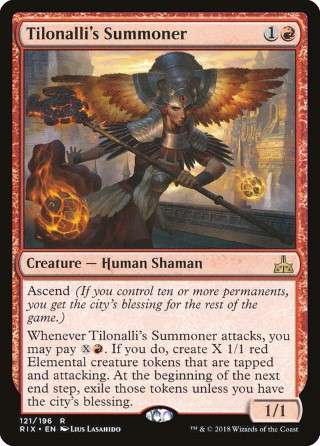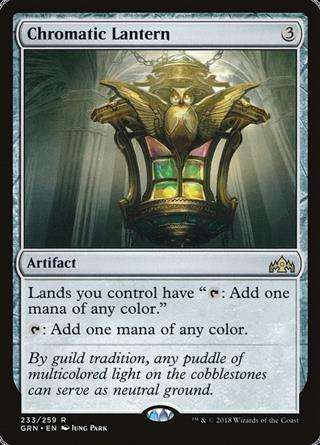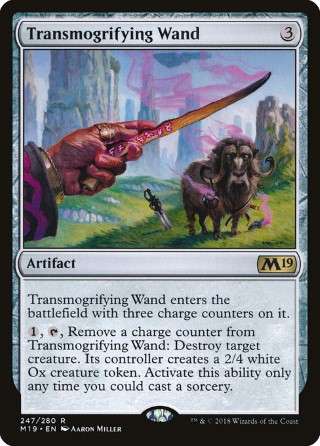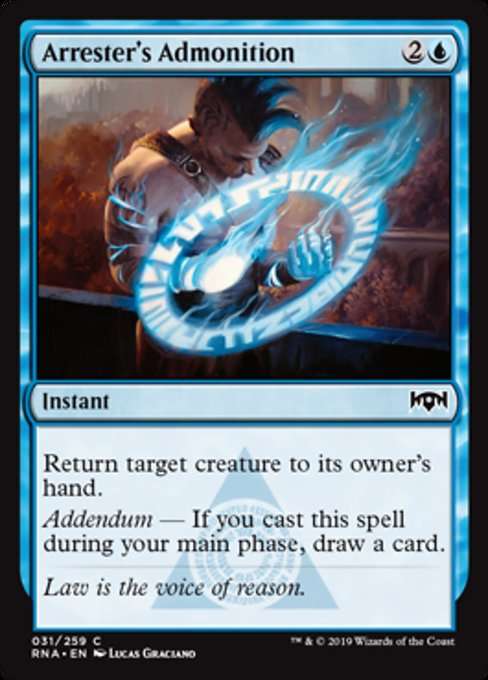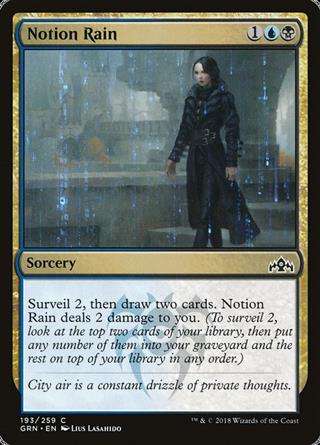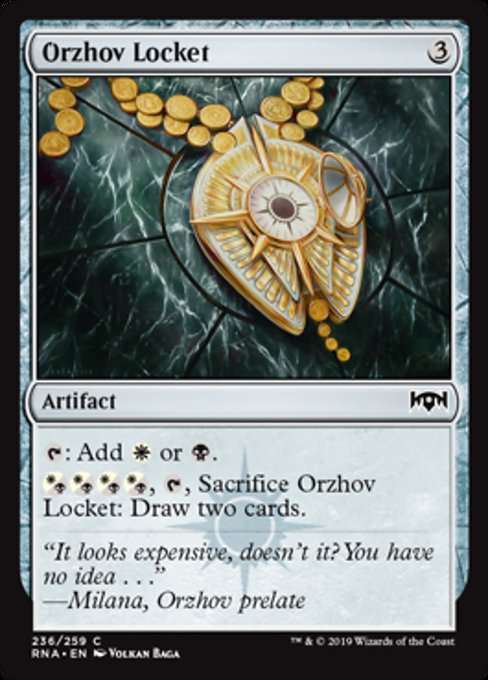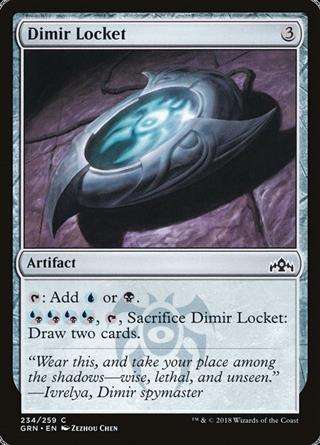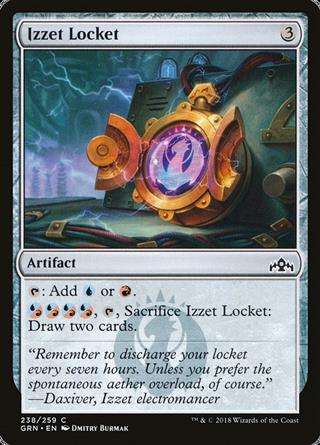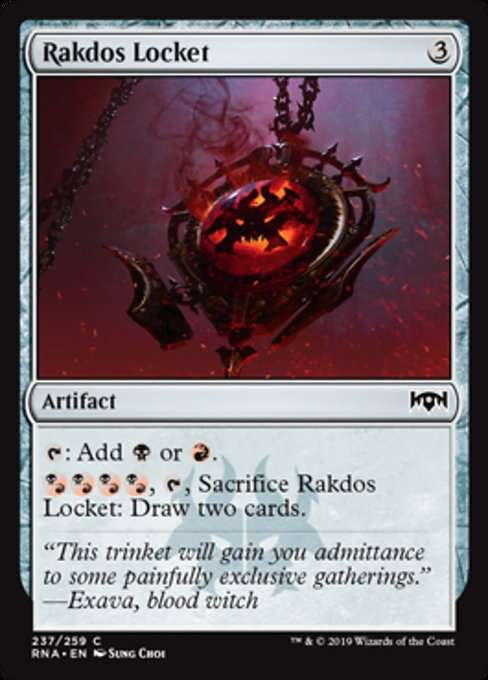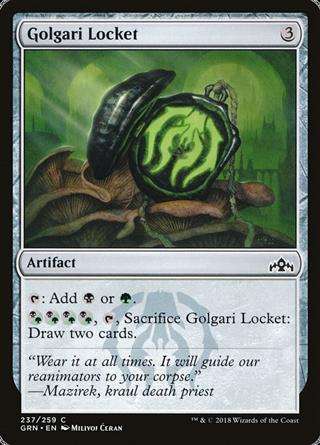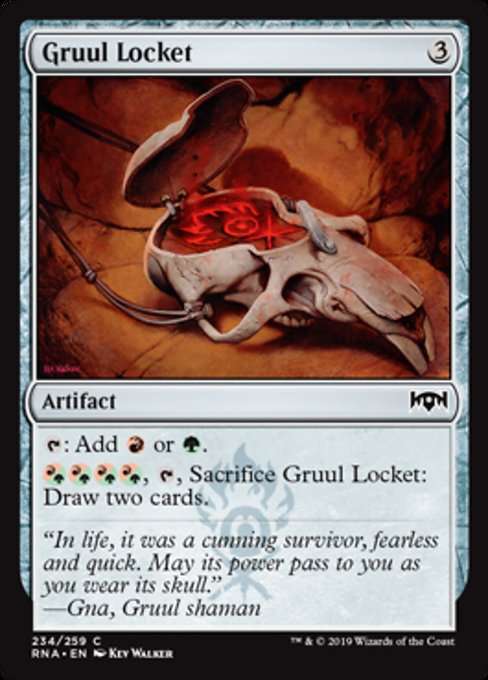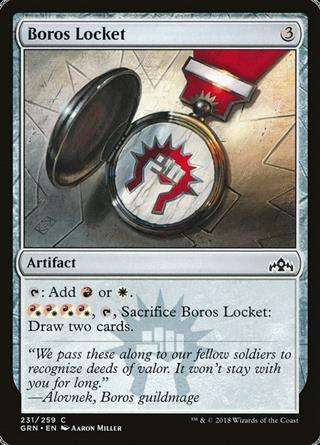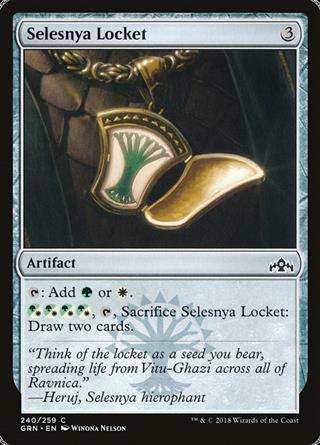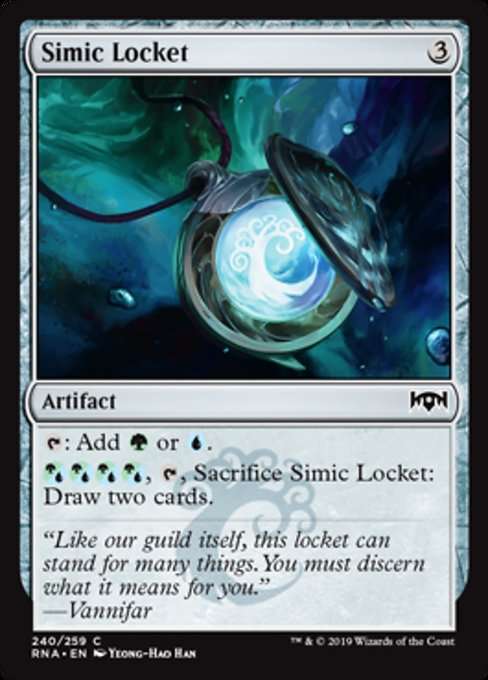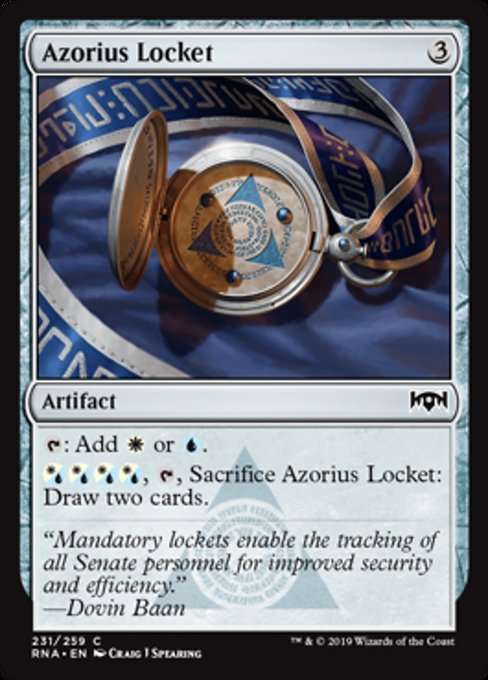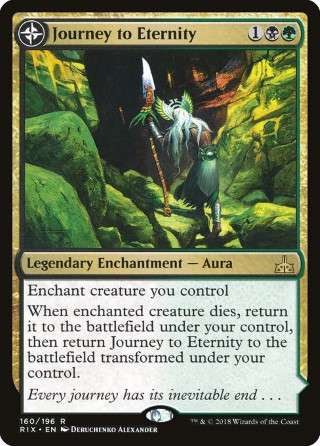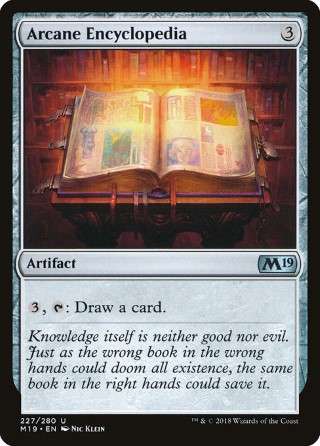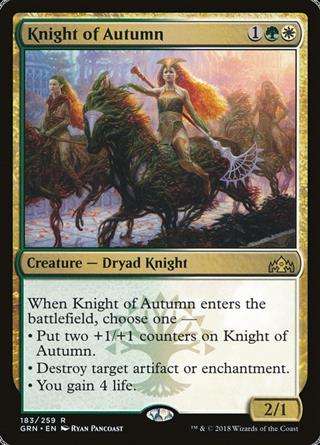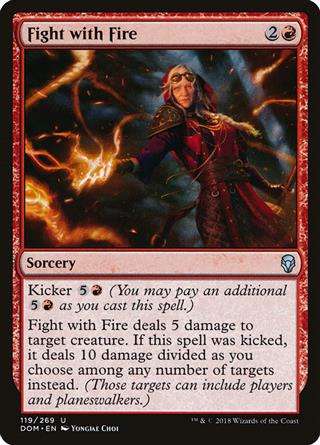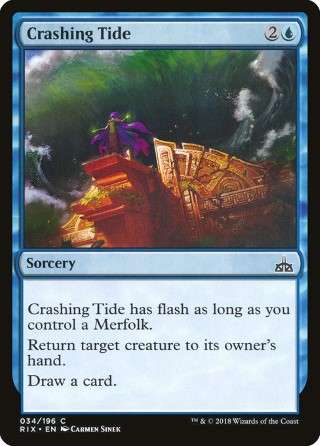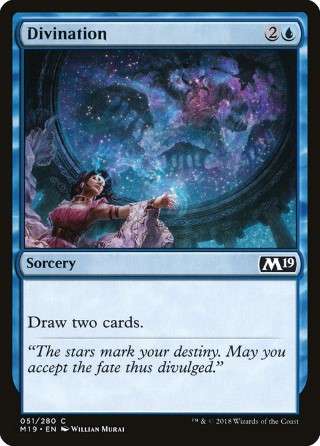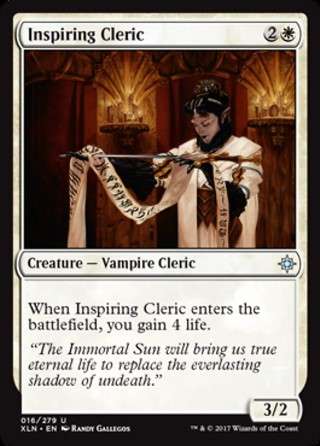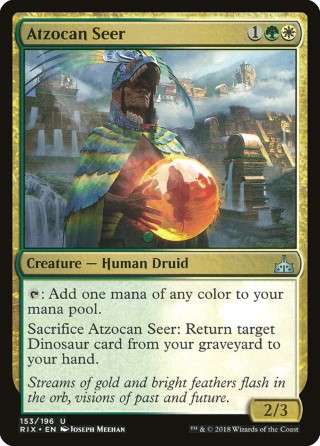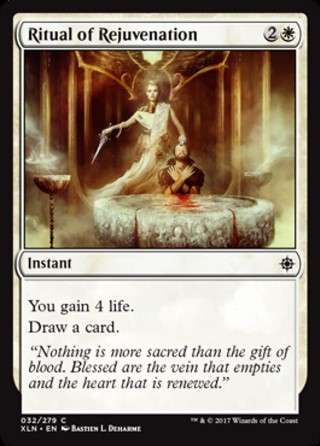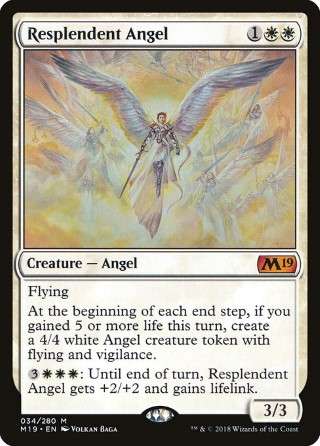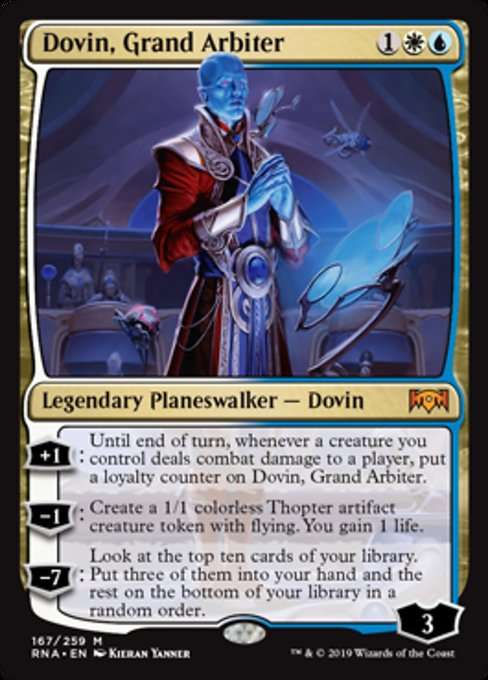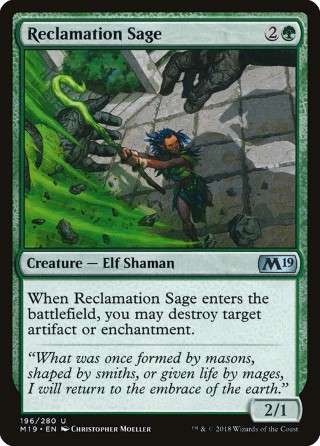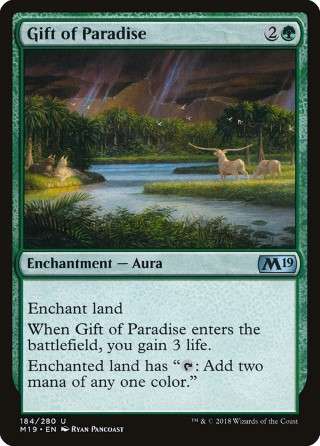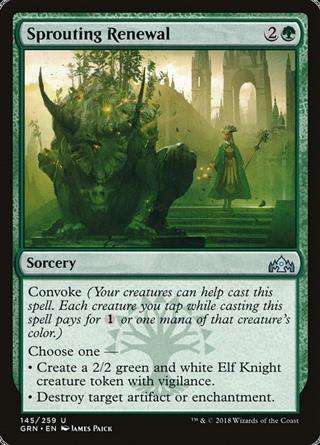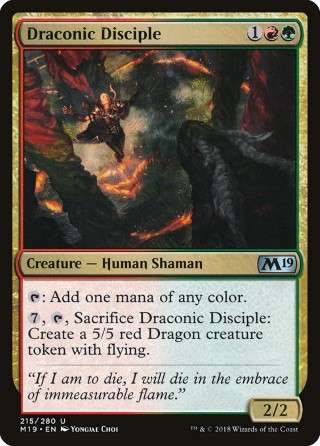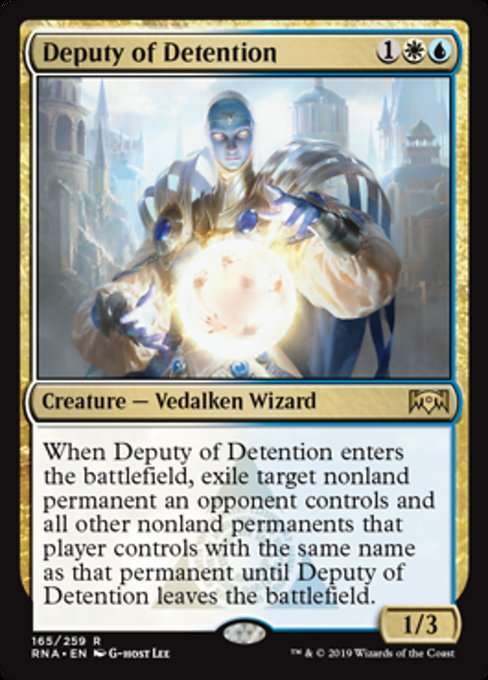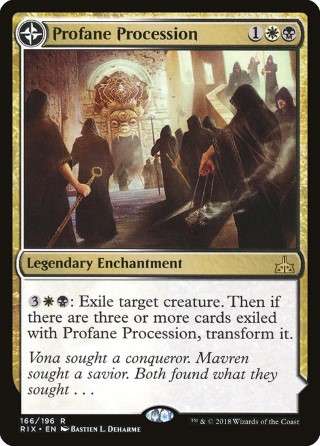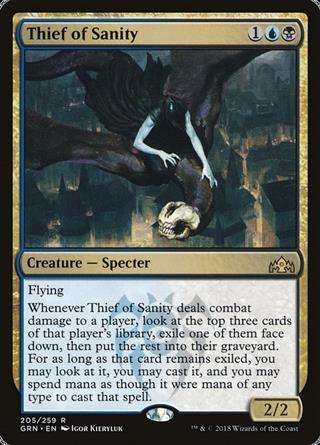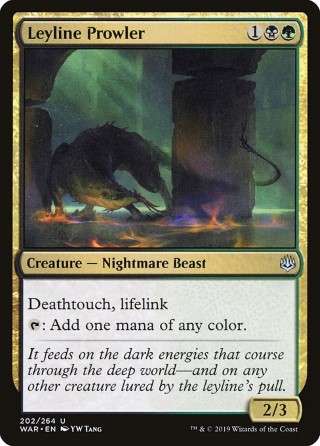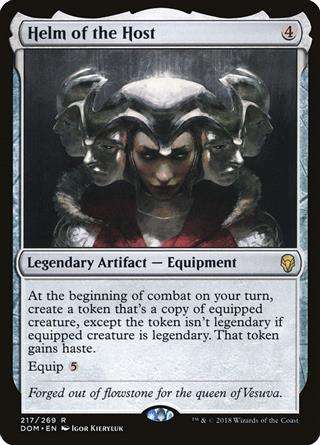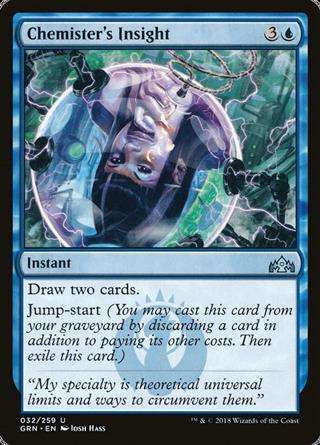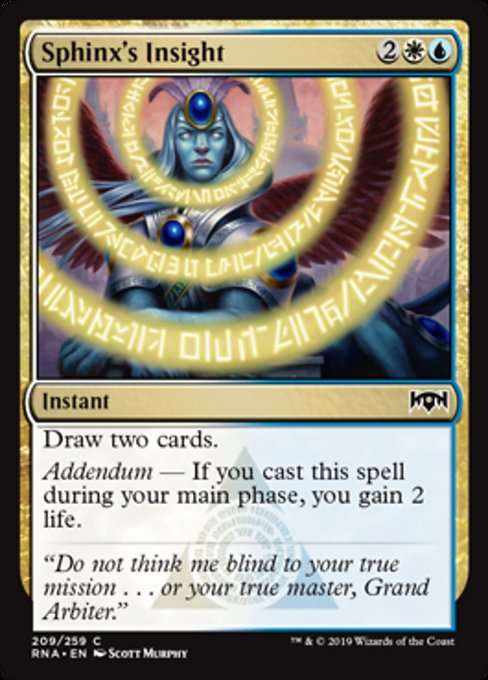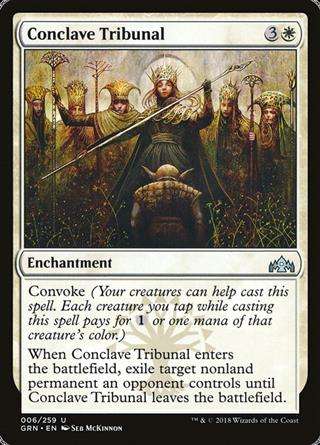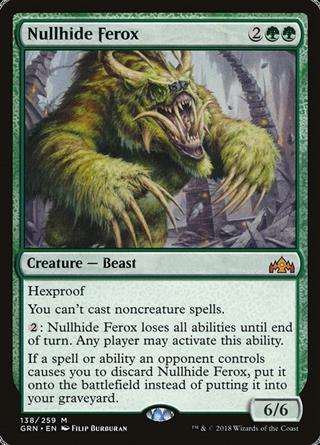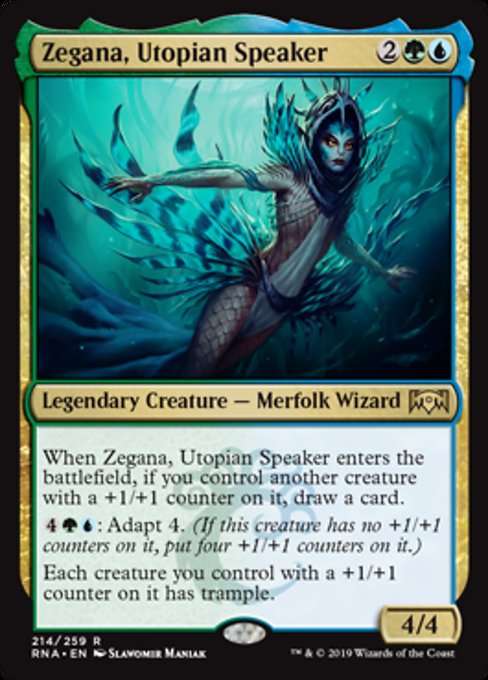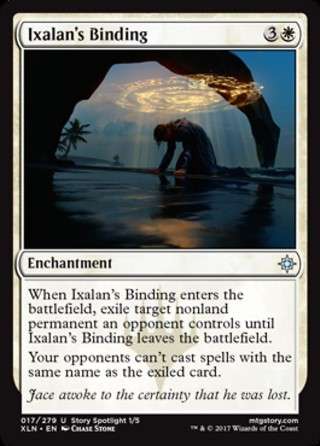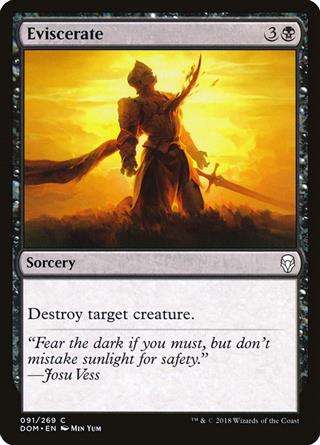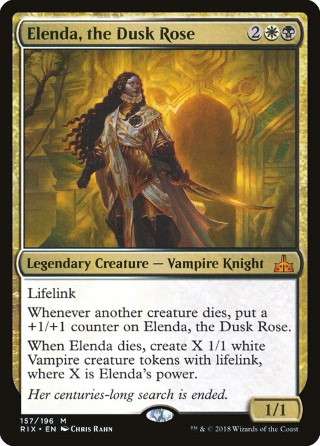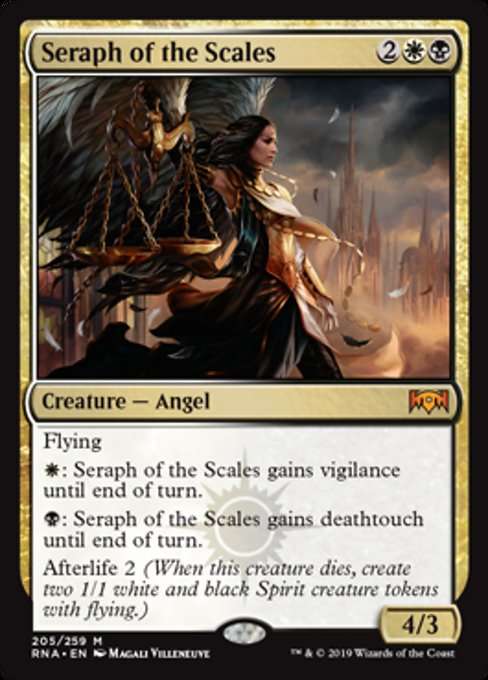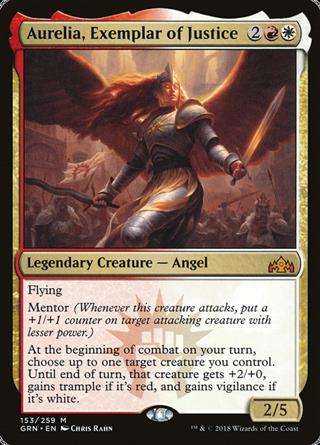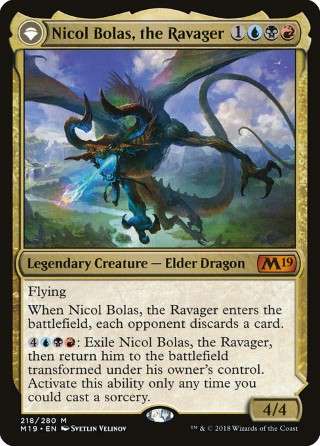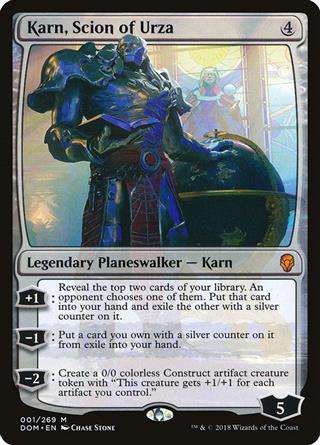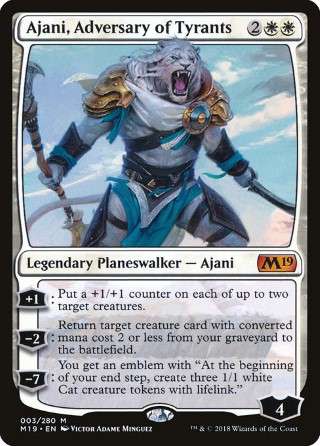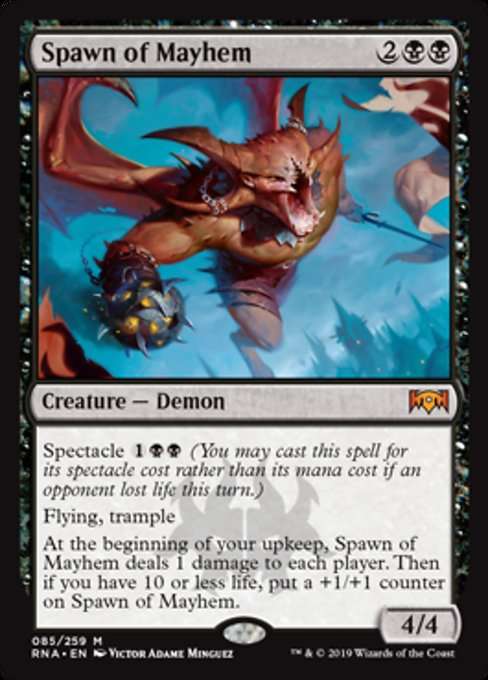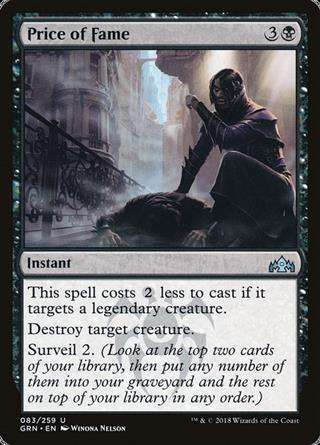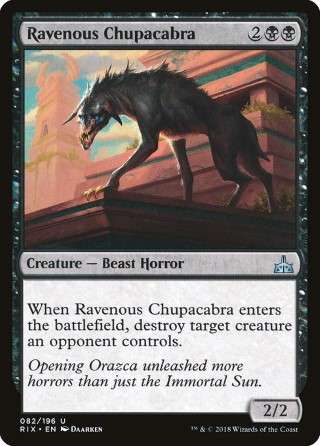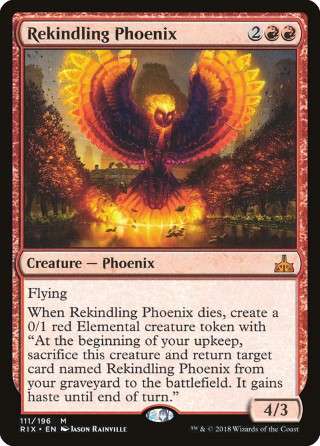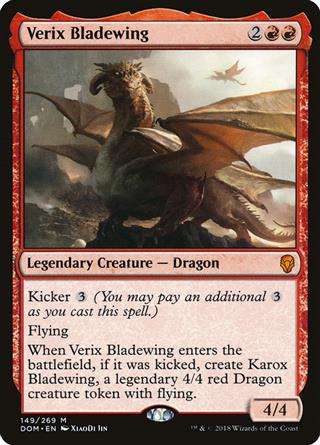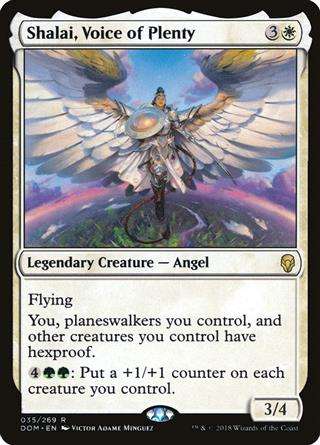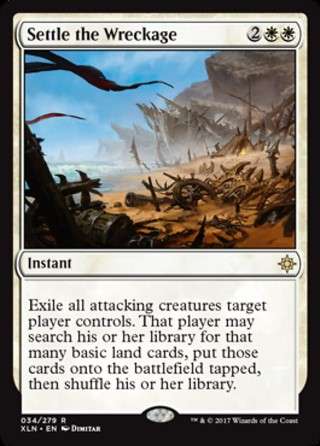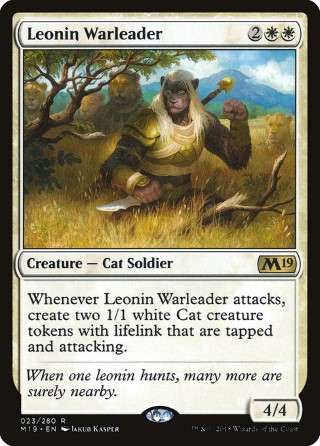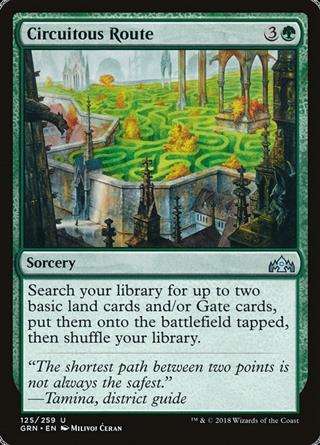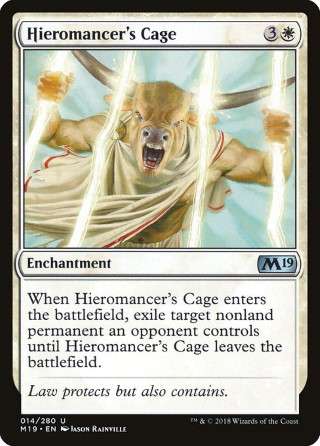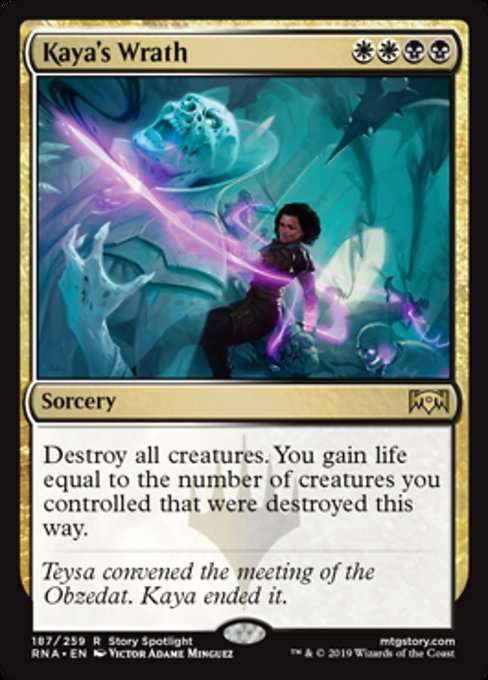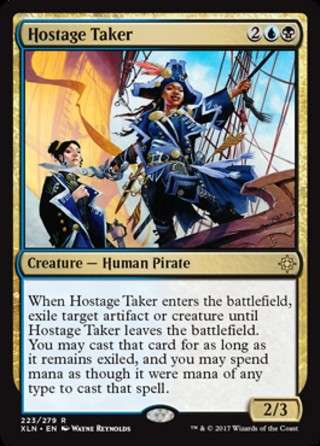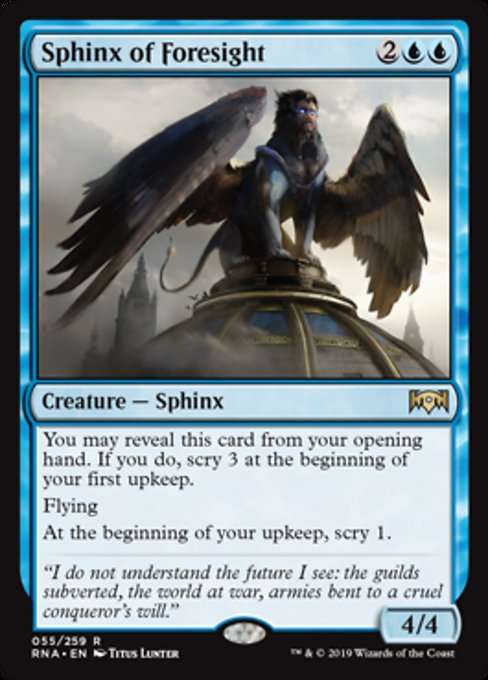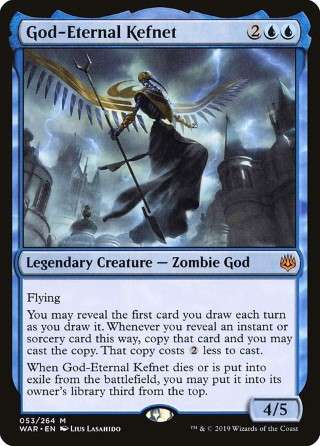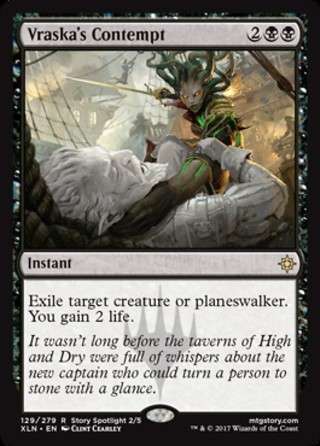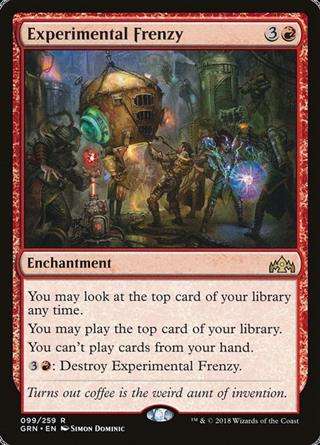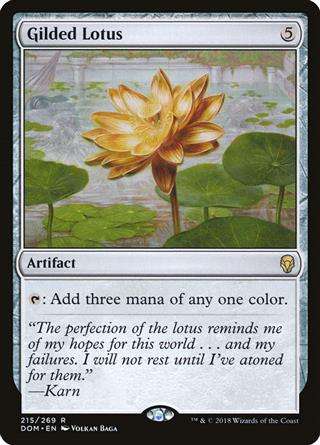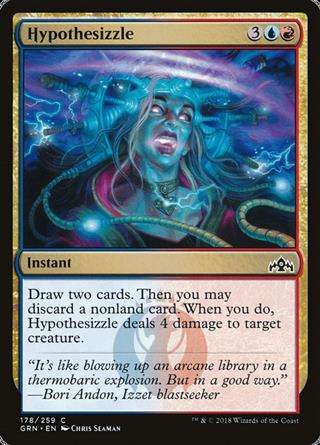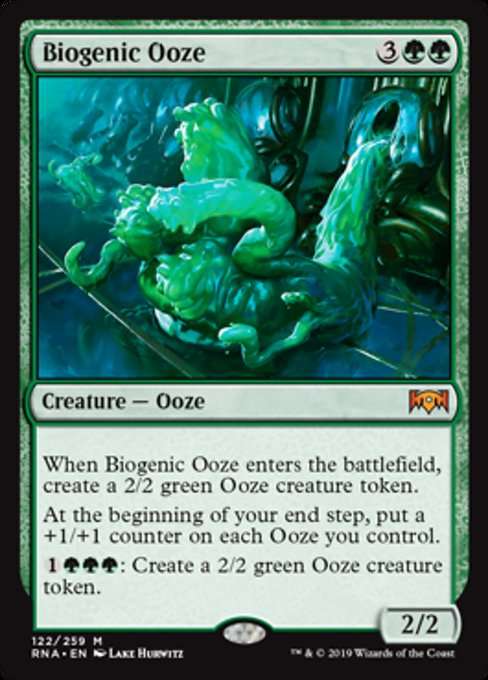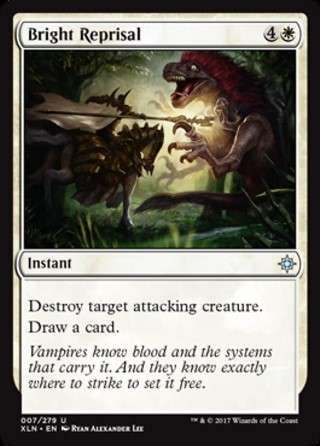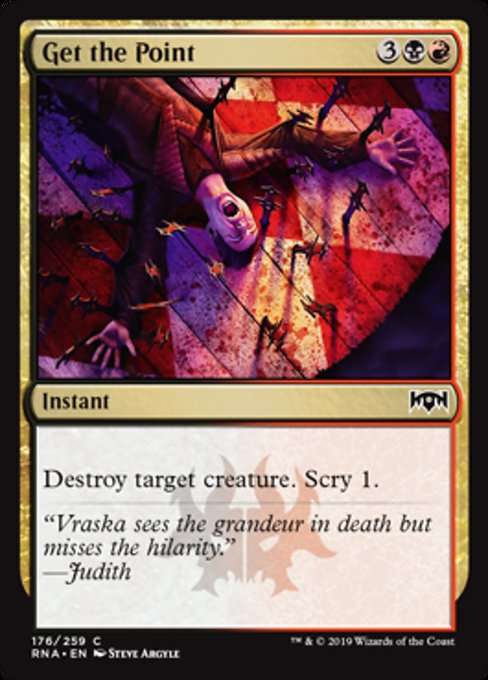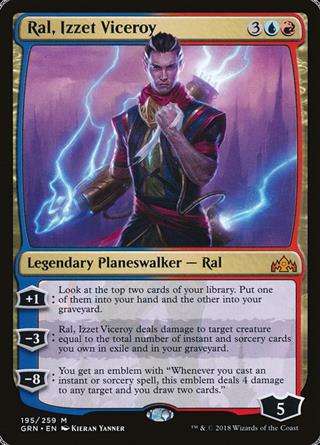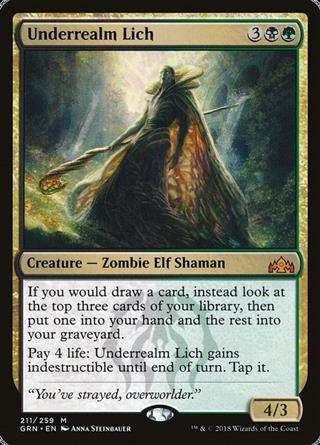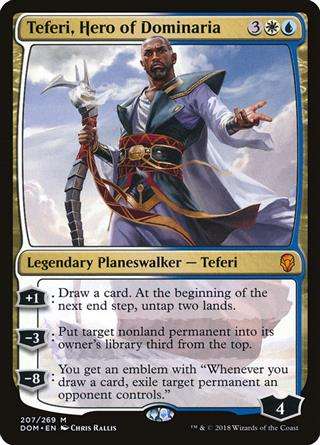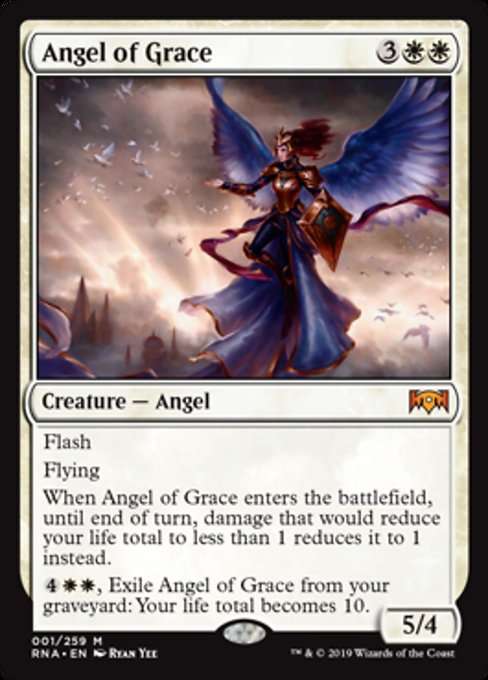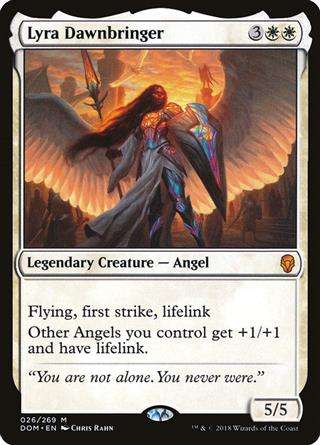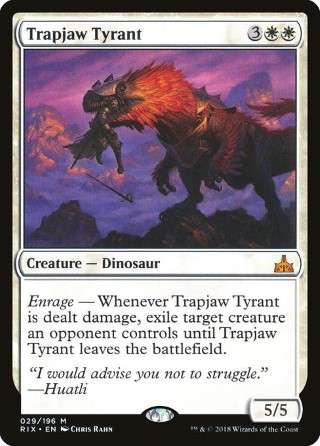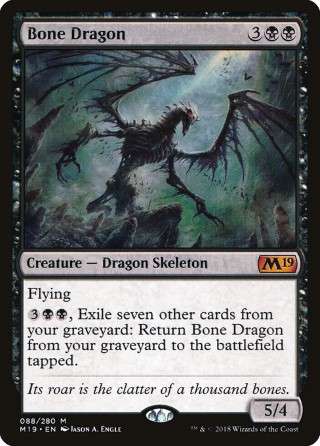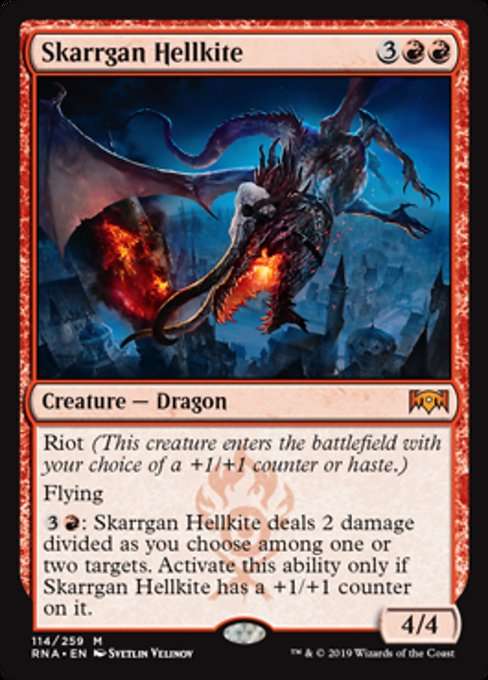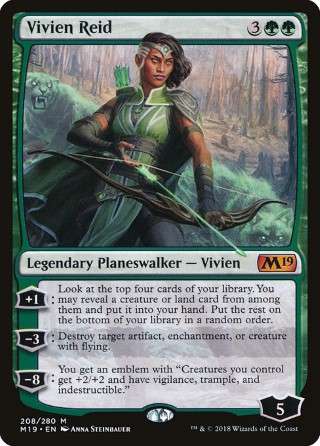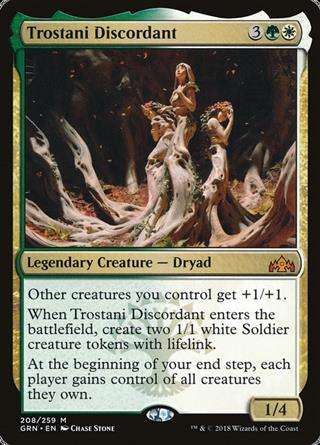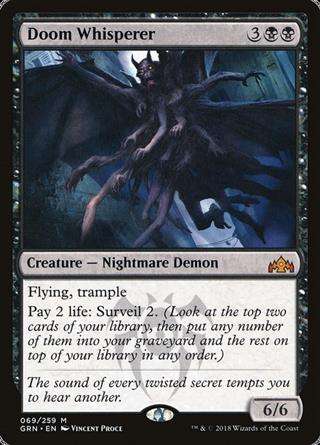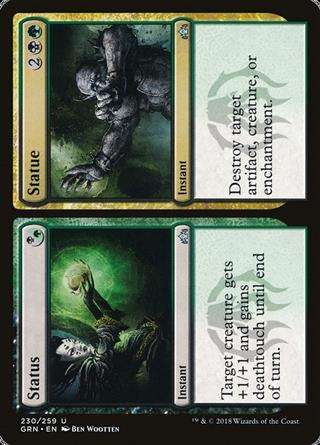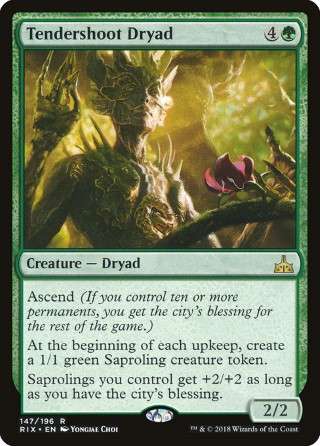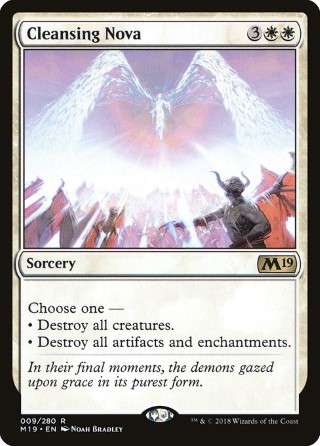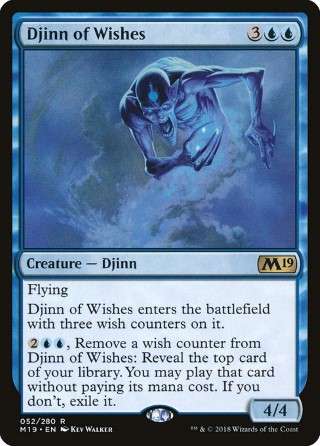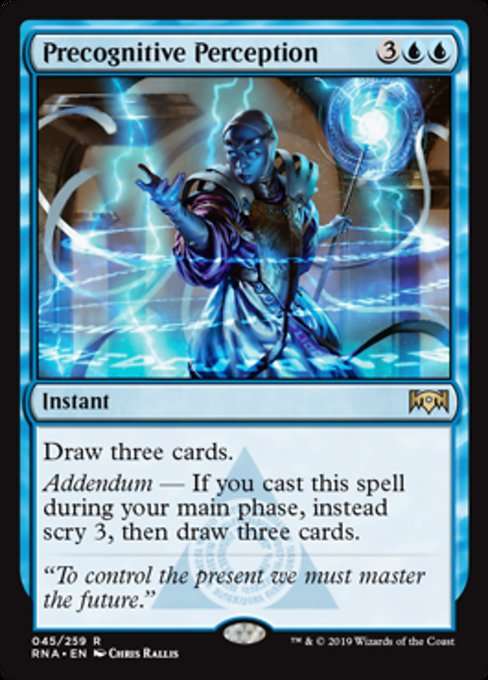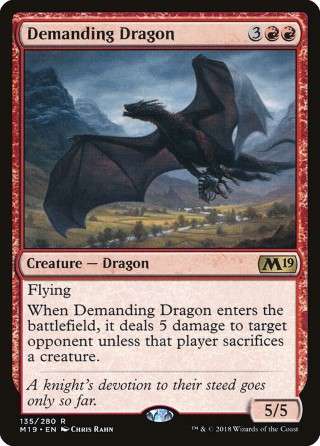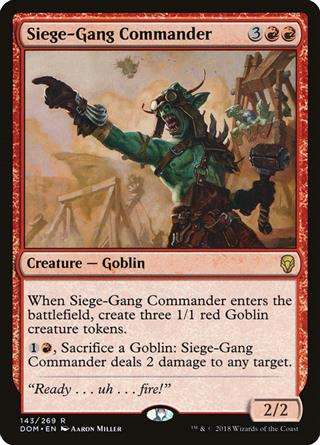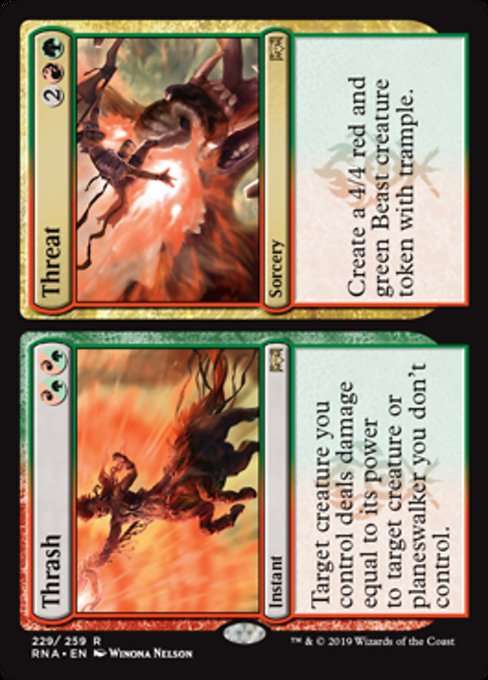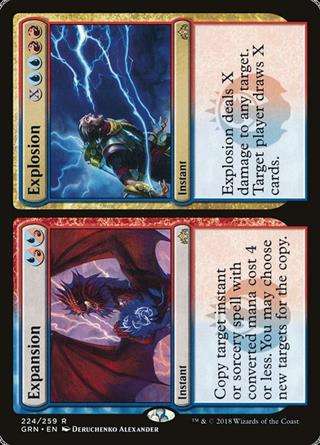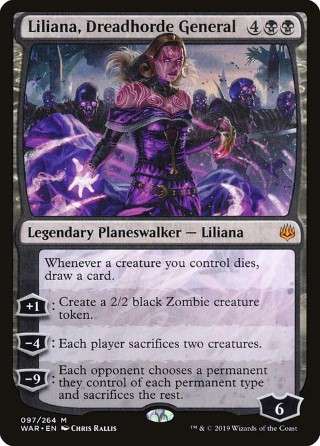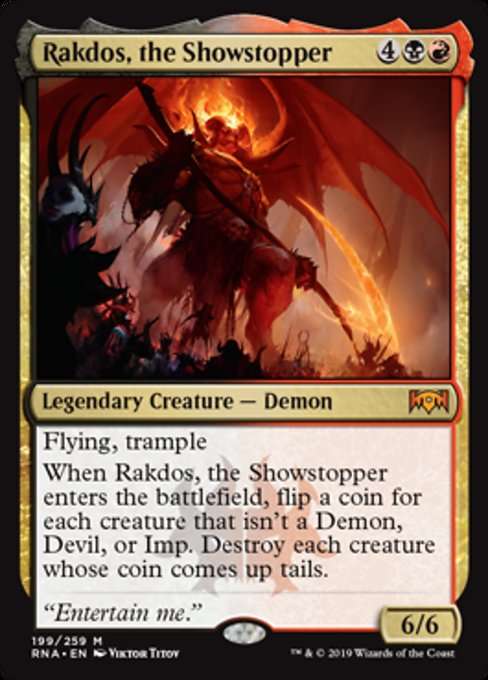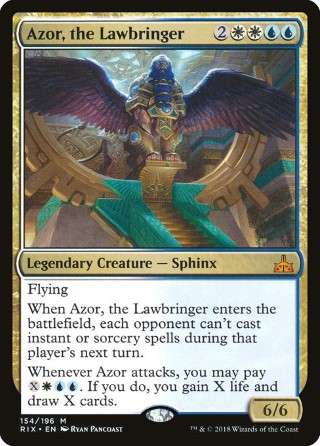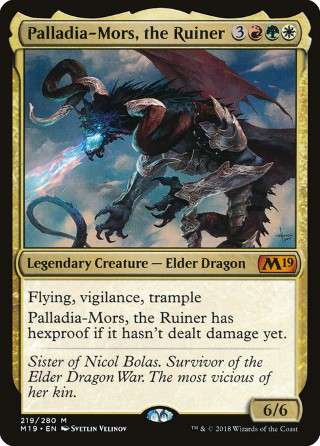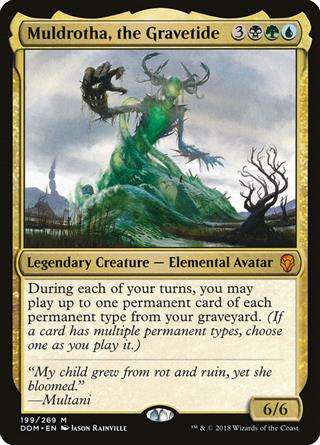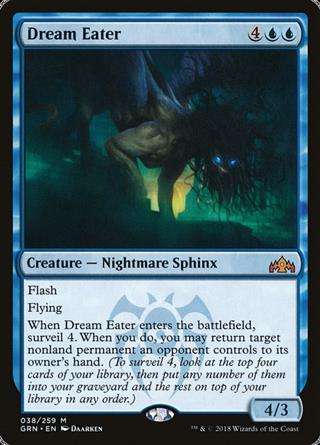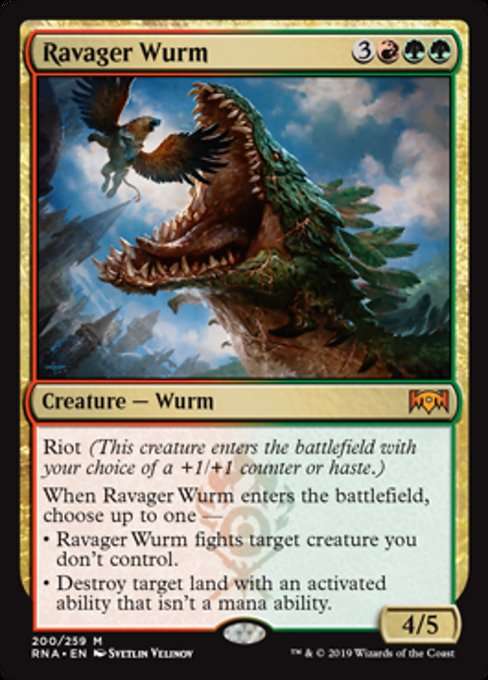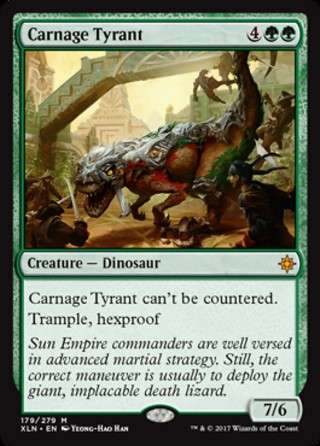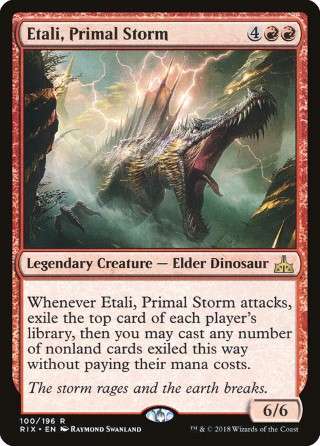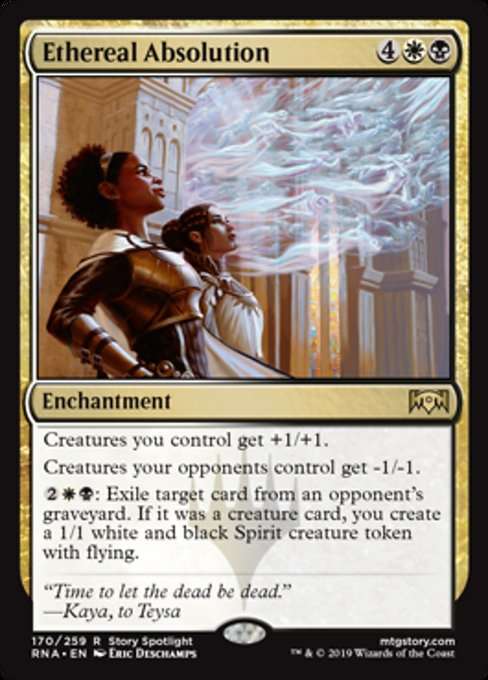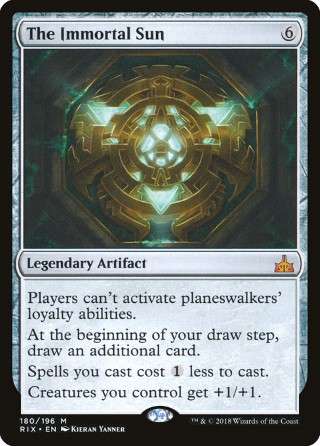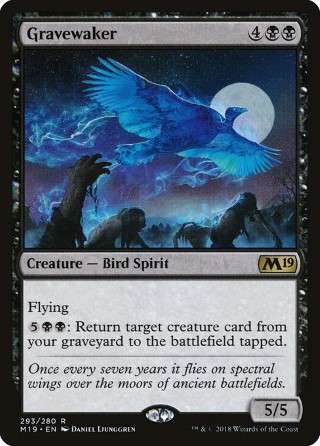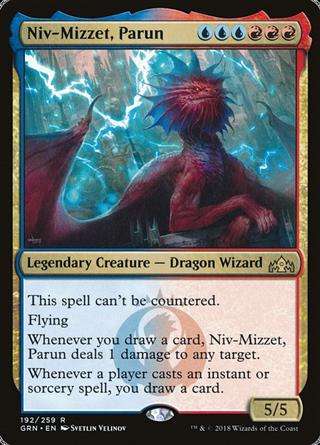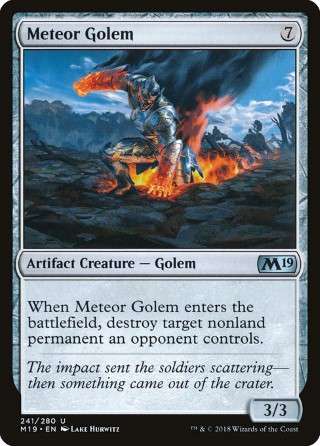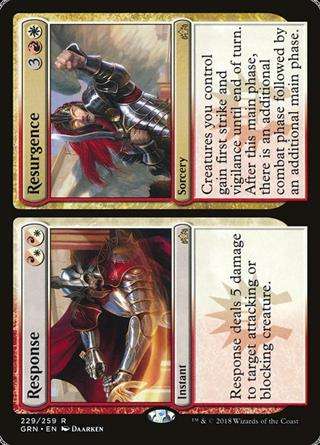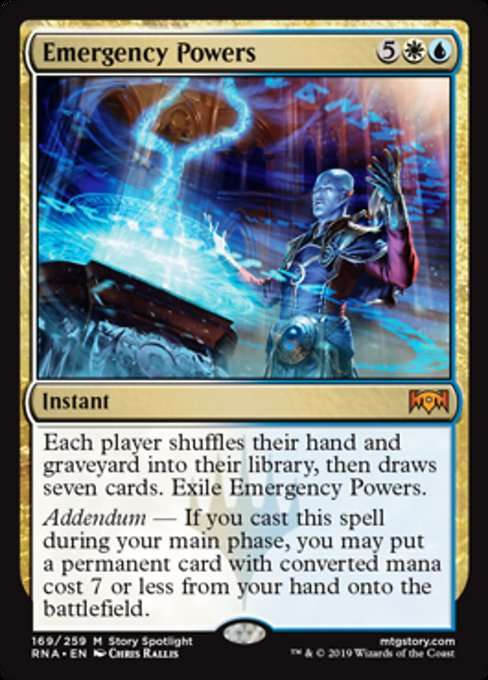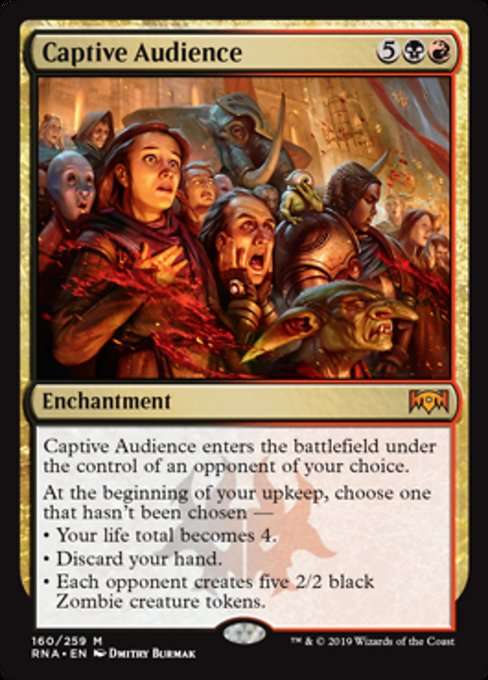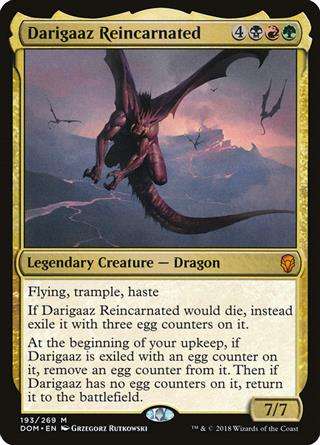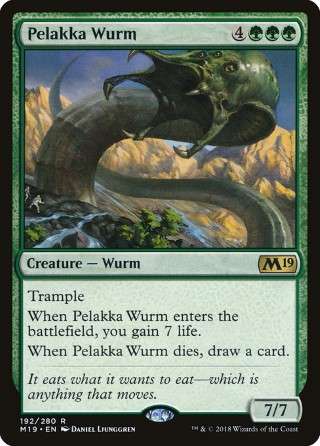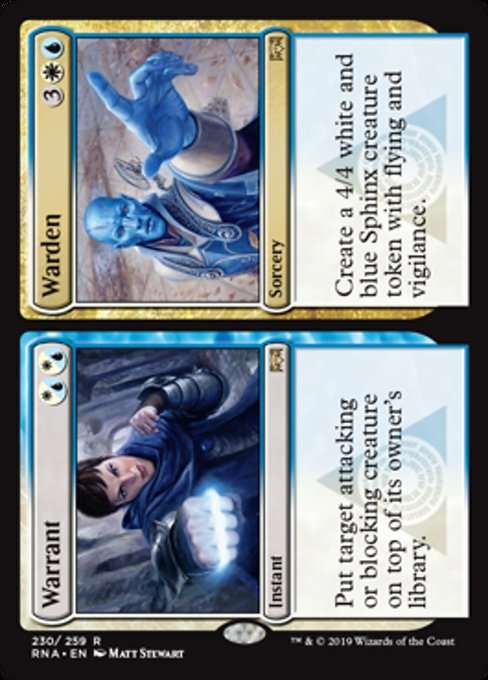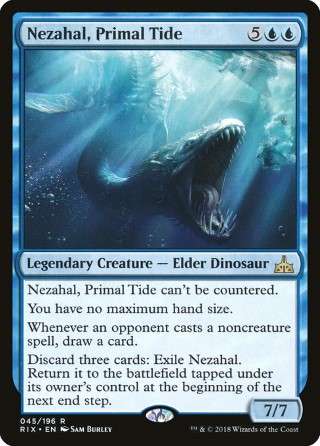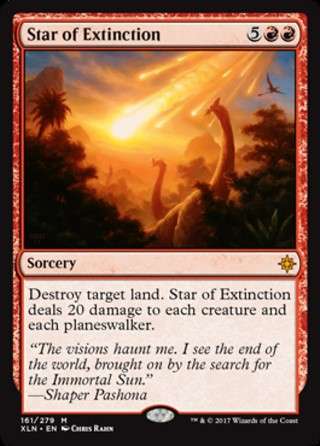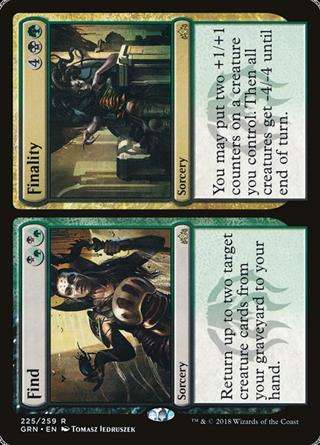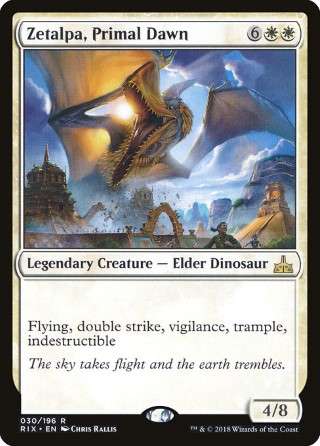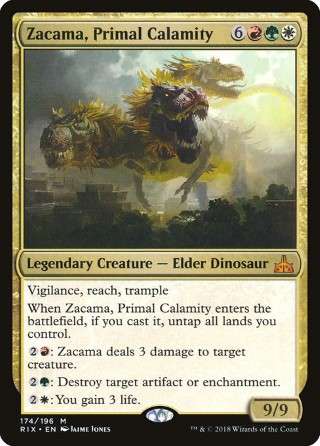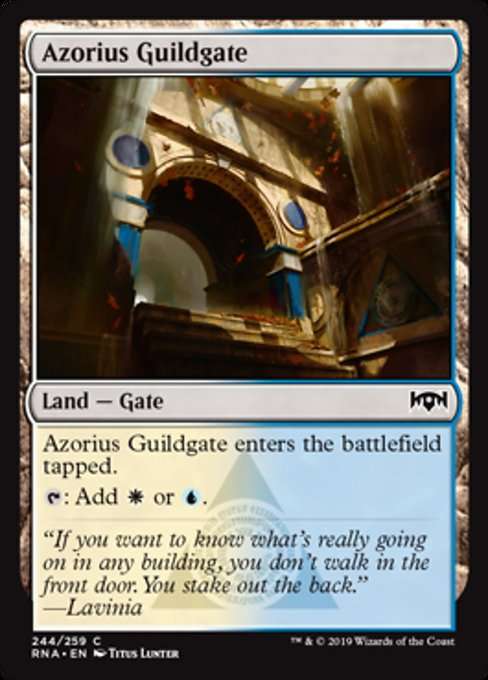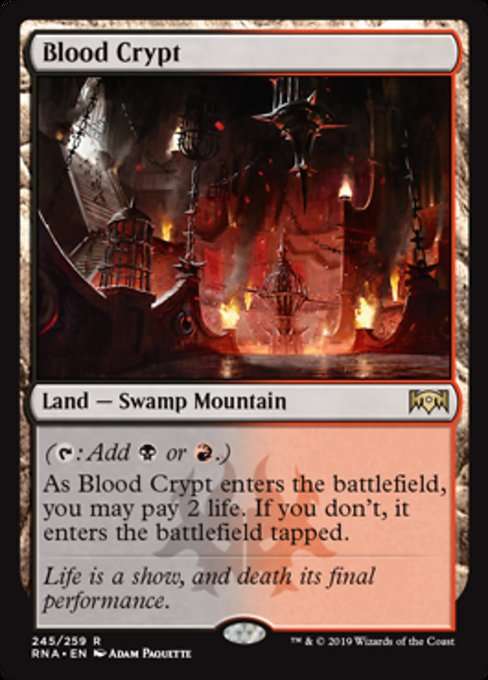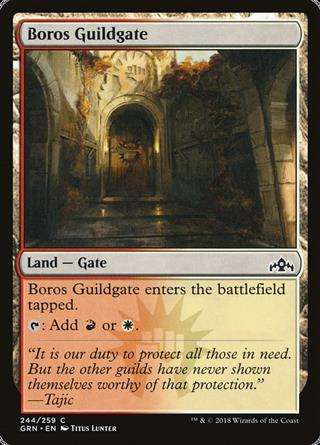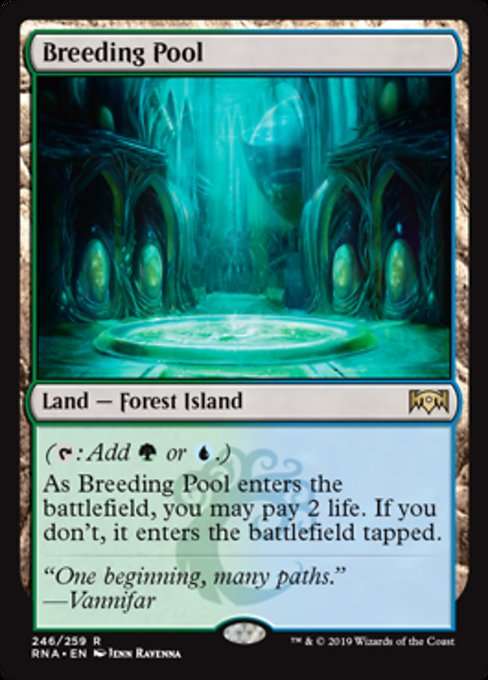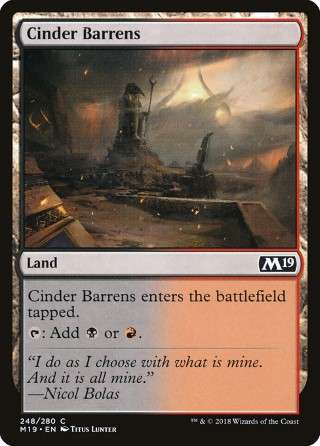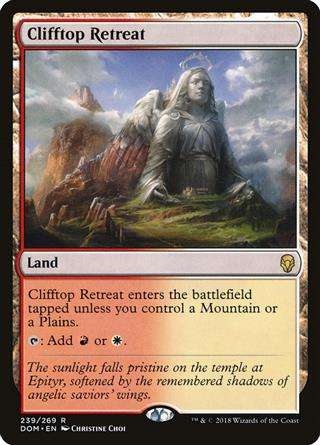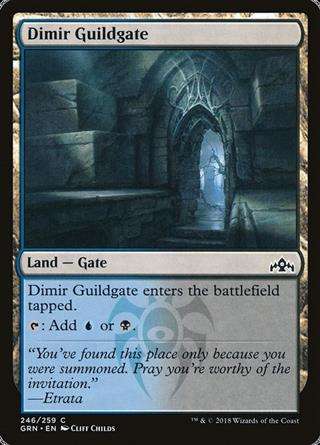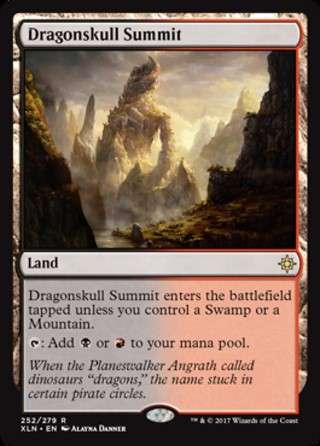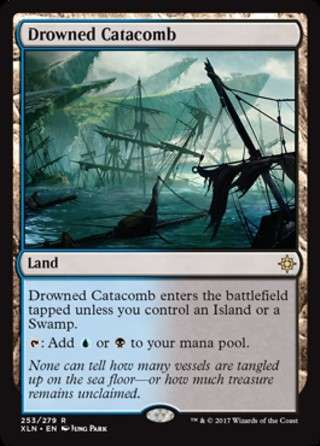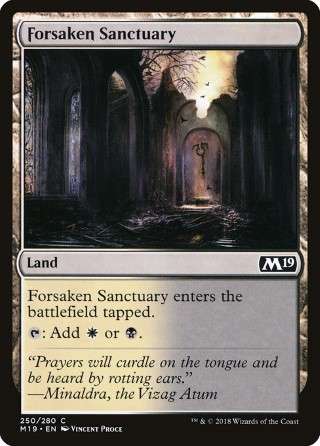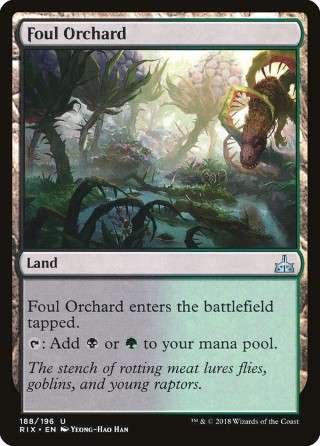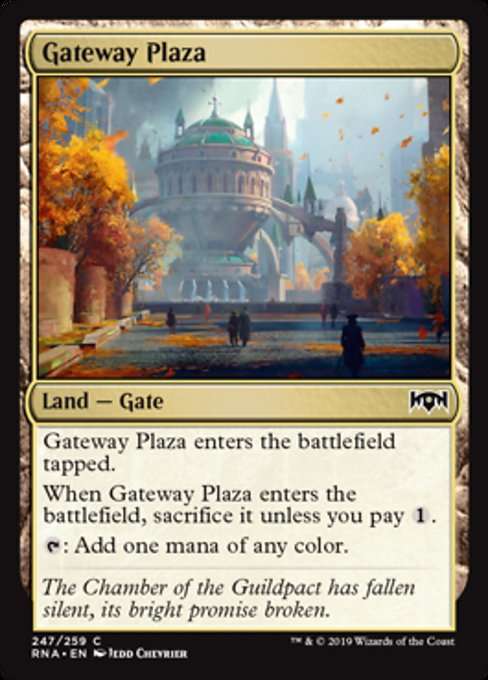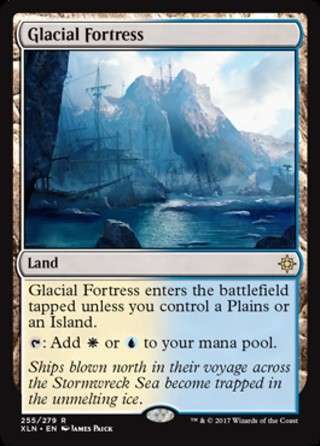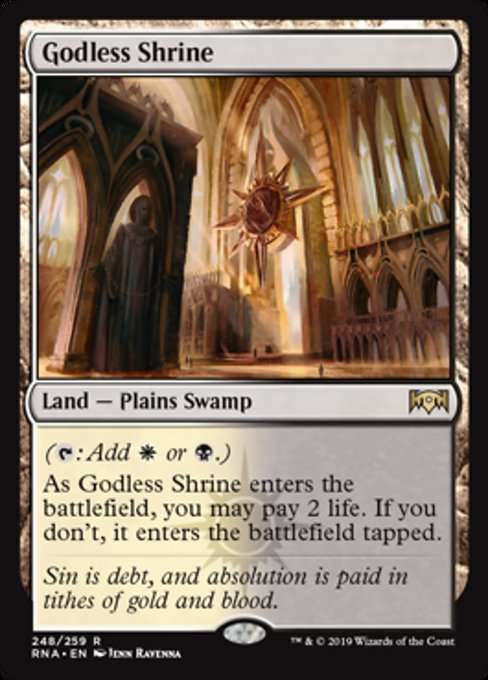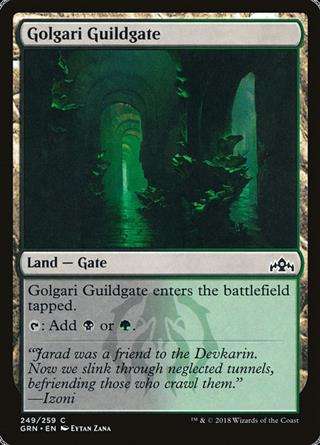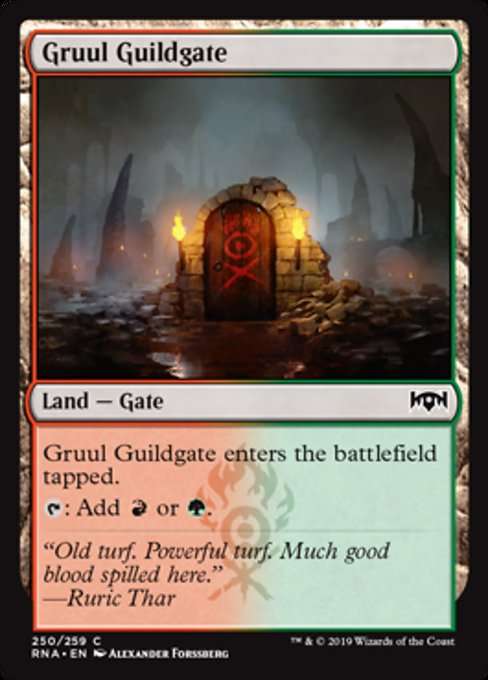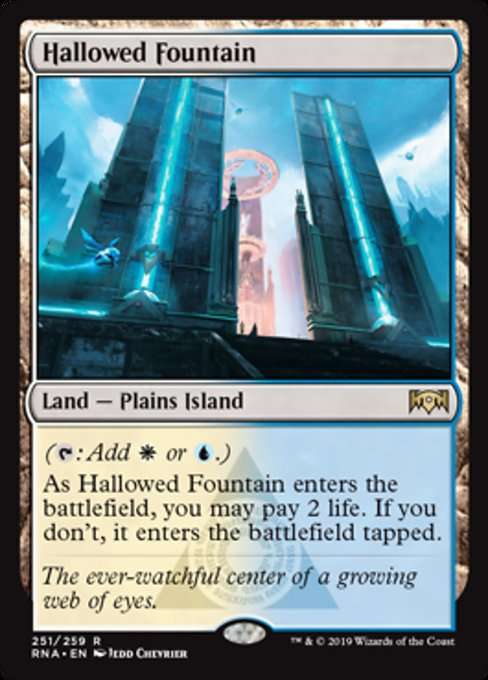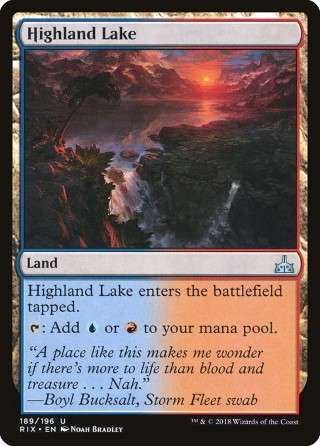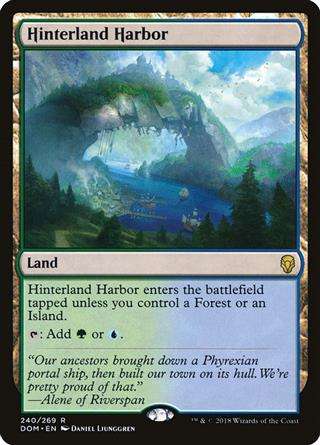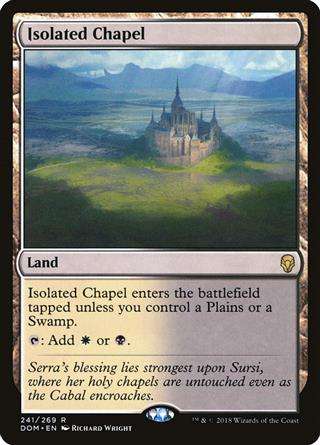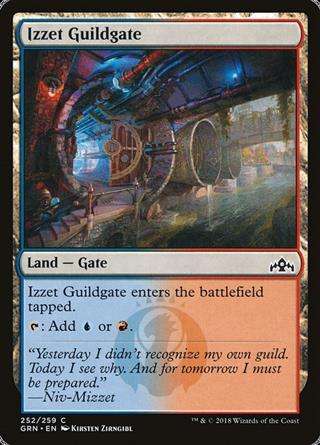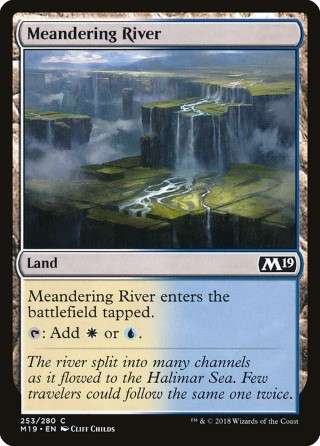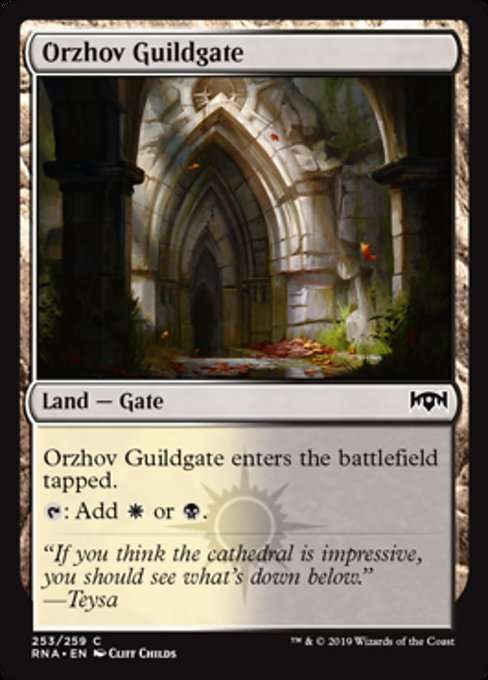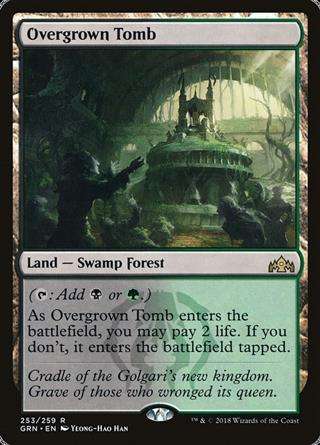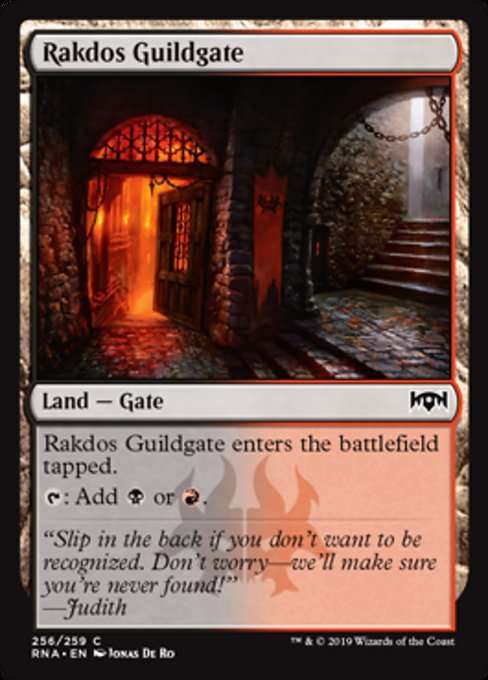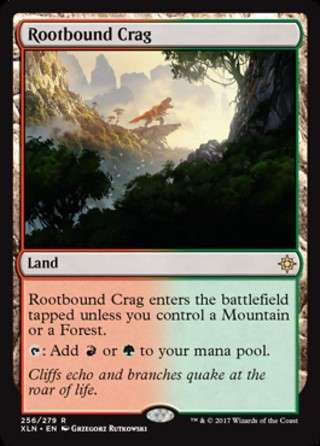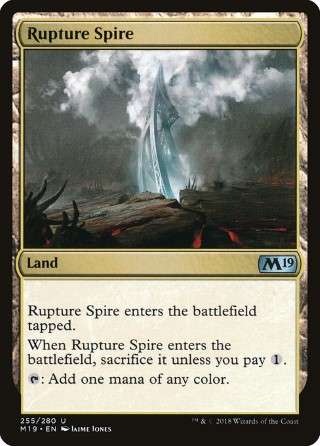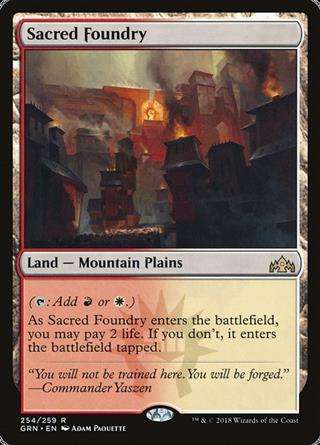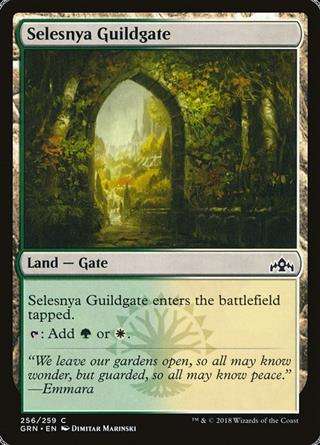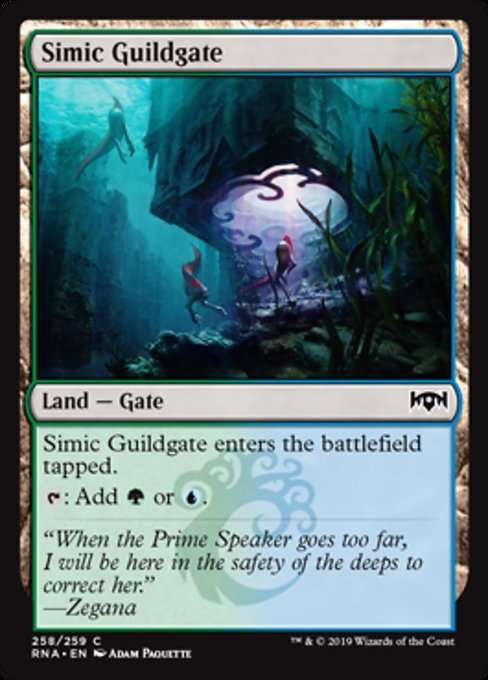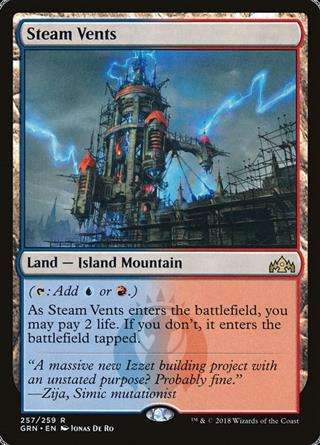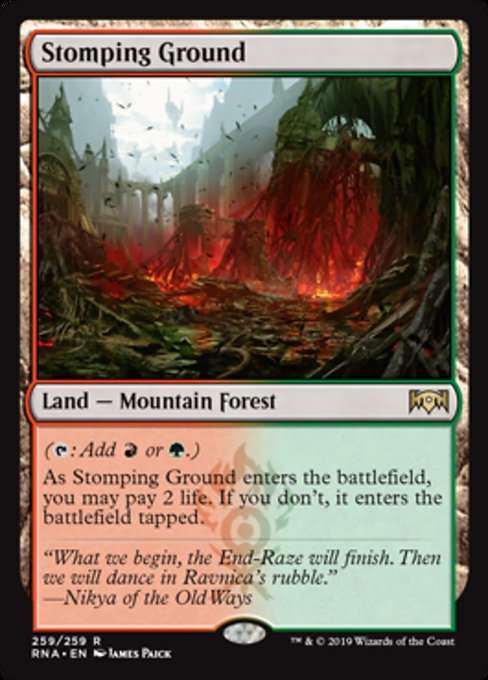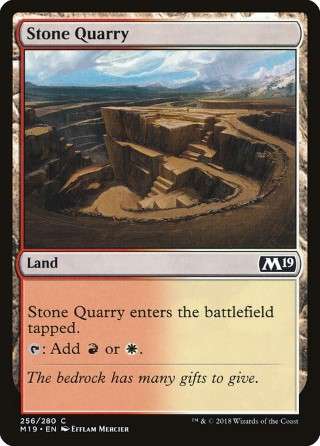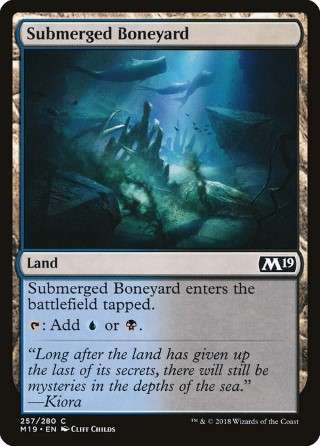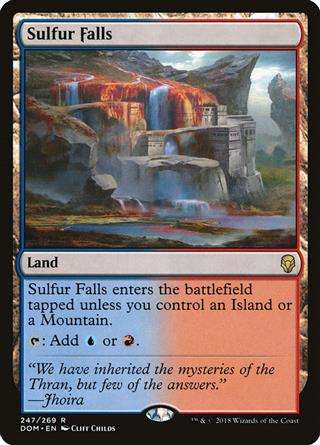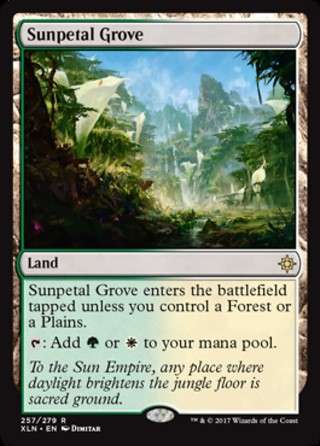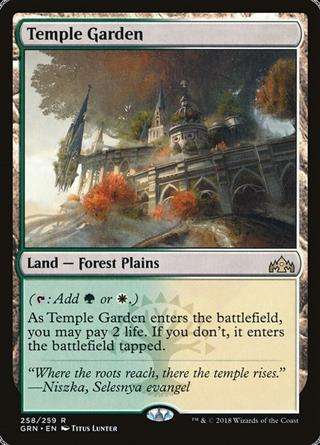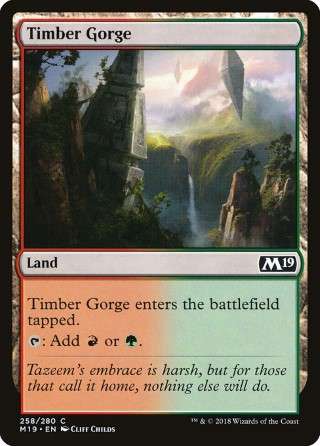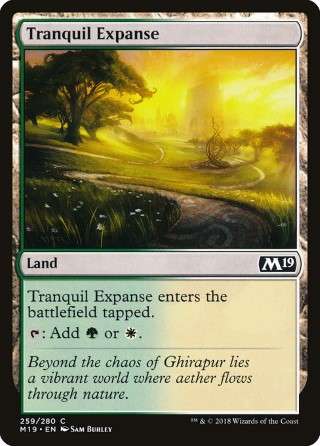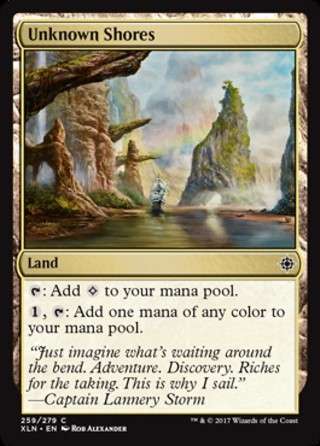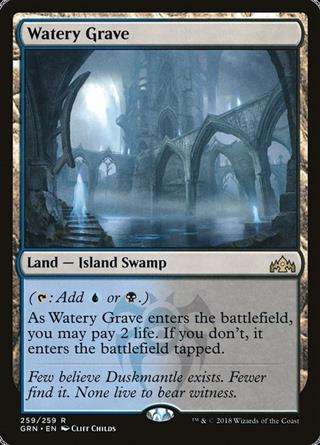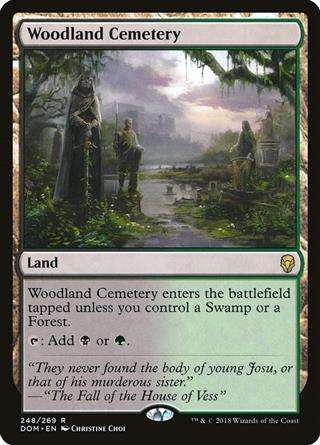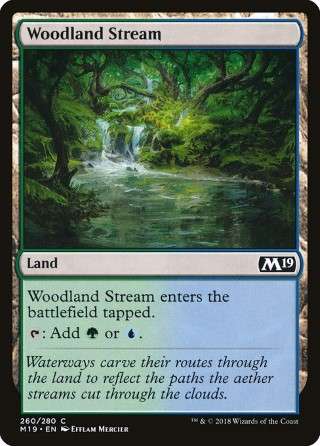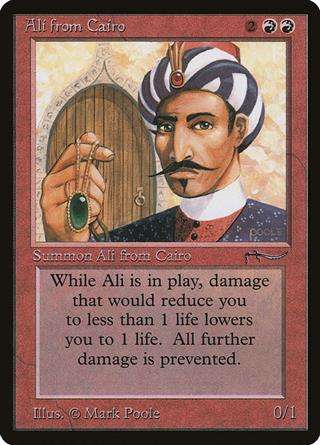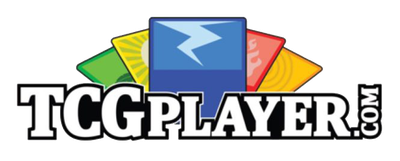Main 250 cards (192 distinct)
| Instant, Sorcery, Enchantment, Artifact (69) | |||
|---|---|---|---|
|
1
Ionize
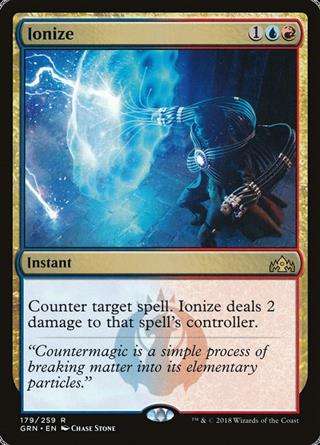
|
$0.49€0.240.02 | ||
| $3.19€1.710.02 | |||
| $2.00€0.860.02 | |||
| $9.83€4.580.02 | |||
| $0.39€0.220.02 | |||
| $0.25€0.150.03 | |||
| $0.25€0.100.03 | |||
| $0.15€0.020.05 | |||
| $0.15€0.020.03 | |||
| $0.18€0.080.03 | |||
| $0.15€0.050.03 | |||
| $0.20€0.100.03 | |||
| $0.20€0.070.03 | |||
| $0.20€0.070.03 | |||
| $0.20€0.080.03 | |||
| $0.19€0.080.03 | |||
| $0.19€0.090.03 | |||
| $0.19€0.100.03 | |||
| $0.20€0.080.03 | |||
| $0.19€0.090.03 | |||
| $0.20€0.070.03 | |||
| $0.23€0.130.03 | |||
|
1
Bedevil
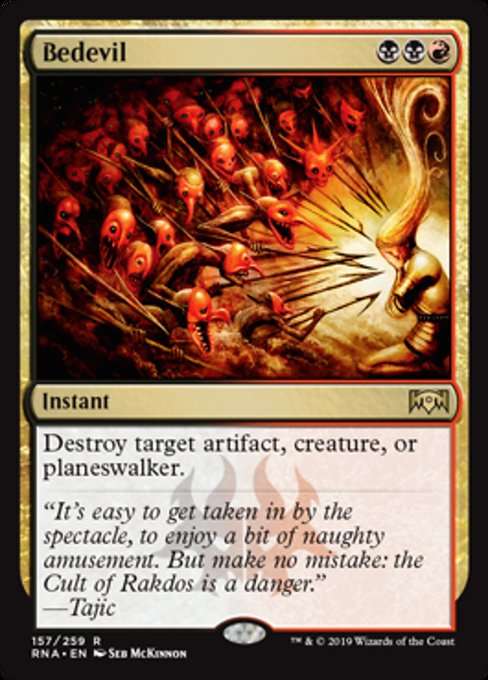
|
$1.23€0.510.02 | ||
| $3.10€1.910.13 | |||
| $5.28€4.930.02 | |||
| $0.28€0.180.02 | |||
| $0.26€0.110.02 | |||
| $0.40€0.200.02 | |||
| $0.24€0.090.03 | |||
| $0.20€0.060.03 | |||
|
1
Sift
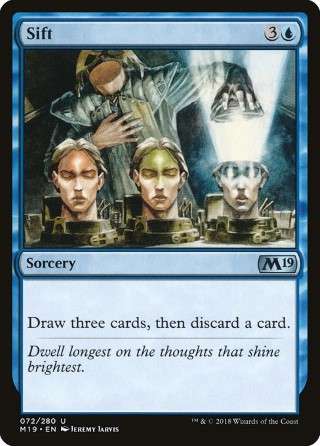
|
$0.20€0.030.05 | ||
| $0.20€0.130.03 | |||
| $0.23€0.110.03 | |||
| $0.19€0.050.03 | |||
| $0.16€0.080.03 | |||
| $0.15€0.070.04 | |||
| $0.23€0.150.03 | |||
| $0.35€0.220.02 | |||
|
1
Mortify
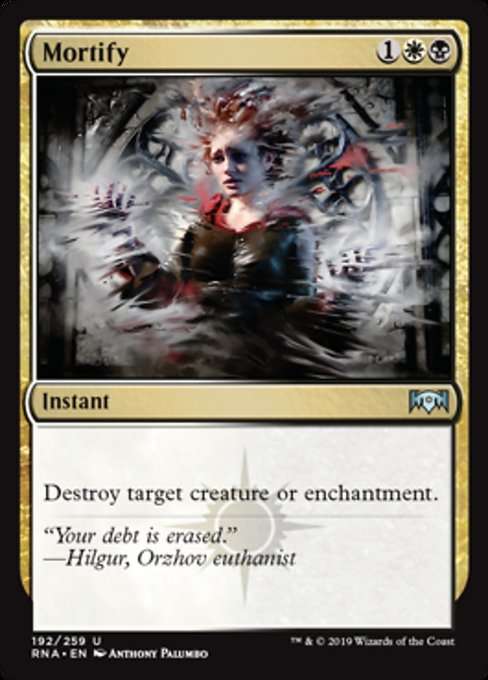
|
$0.25€0.160.03 | ||
| $0.52€0.410.02 | |||
| $0.15€0.040.03 | |||
| $0.69€0.540.02 | |||
| $3.85€2.090.02 | |||
| $0.18€0.080.03 | |||
| $0.49€0.330.02 | |||
| $0.15€0.100.04 | |||
| $0.25€0.170.03 | |||
| $0.22€0.170.03 | |||
| $3.60€1.880.02 | |||
| $0.75€0.460.03 | |||
| $0.20€0.110.03 | |||
| $0.20€0.140.03 | |||
| $0.20€0.120.03 | |||
| $0.25€0.150.02 | |||
| $0.54€0.530.02 | |||
| $0.20€0.060.04 | |||
| $0.50€0.480.02 | |||
| $0.50€0.310.02 | |||
| $0.18€0.080.03 | |||
|
1
Banefire
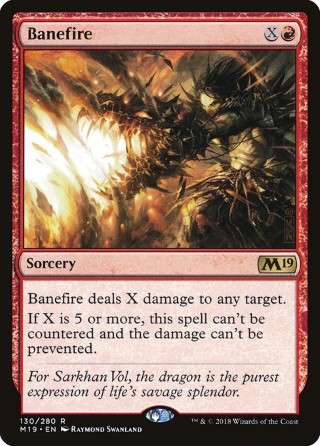
|
$0.75€0.460.02 | ||
| $0.83€0.790.02 | |||
| $0.66€0.430.02 | |||
| $0.35€0.160.02 | |||
|
1
Murder
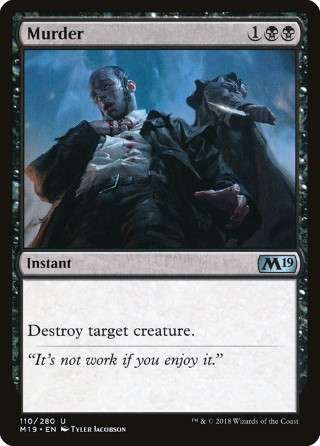
|
$0.20€0.080.05 | ||
| $0.60€0.490.02 | |||
| $15.79€11.720.03 | |||
| $0.30€0.440.57 | |||
| $1.00€0.770.02 | |||
| $0.30€0.140.02 | |||
| Creature (68) | |||
| $0.25€0.220.03 | |||
| $0.20€0.080.03 | |||
| $0.20€0.120.03 | |||
| $0.49€0.290.02 | |||
| $2.57€1.950.02 | |||
| $0.55€0.770.03 | |||
| $0.25€0.090.02 | |||
| $0.34€0.250.02 | |||
| $0.20€0.140.03 | |||
| $0.18€0.120.04 | |||
| $0.20€0.090.03 | |||
| $0.19€0.100.03 | |||
| $0.25€0.180.03 | |||
| $0.20€0.060.03 | |||
| $5.61€4.700.02 | |||
| $0.83€0.930.02 | |||
| $2.00€5.170.02 | |||
| $5.40€3.150.02 | |||
| $0.34€0.200.03 | |||
| $1.32€1.440.02 | |||
| $1.18€0.920.02 | |||
| $1.03€1.050.06 | |||
| $16.61€15.740.02 | |||
| $0.80€0.760.02 | |||
| $0.63€0.640.02 | |||
| $2.34€1.850.02 | |||
| $2.99€3.220.02 | |||
| $0.40€0.220.02 | |||
| $1.00€0.950.02 | |||
| $6.18€5.370.41 | |||
| $0.95€0.700.03 | |||
| $4.87€3.750.02 | |||
| $6.06€6.720.02 | |||
| $0.45€0.410.02 | |||
| $0.50€0.430.02 | |||
| $0.77€0.900.02 | |||
| $0.65€0.610.02 | |||
| $0.38€0.320.03 | |||
| $0.99€0.660.02 | |||
| $0.60€0.640.02 | |||
| $0.65€0.450.02 | |||
| $0.50€0.550.02 | |||
| $4.21€4.480.14 | |||
| $1.98€1.800.02 | |||
| $3.63€1.840.02 | |||
| $5.56€4.130.02 | |||
| $2.40€1.490.02 | |||
| $0.25€0.220.03 | |||
| $0.29€0.170.03 | |||
| $8.67€4.730.03 | |||
| $0.25€0.180.02 | |||
| $0.50€0.490.02 | |||
| $0.25€0.150.03 | |||
| $0.39€0.410.02 | |||
| $0.49€0.240.02 | |||
| $0.45€0.400.02 | |||
| $0.48€0.370.02 | |||
| $0.25€0.120.02 | |||
| $0.26€0.110.02 | |||
| $0.40€0.250.02 | |||
| $7.59€6.610.02 | |||
| $1.99€1.590.02 | |||
| $0.26€0.210.03 | |||
| $0.25€0.110.02 | |||
| $0.72€0.440.02 | |||
| $0.47€0.230.02 | |||
| $0.38€0.320.02 | |||
| $2.60€0.650.02 | |||
| Planeswalker (7) | |||
| $7.55€6.980.07 | |||
| $0.80€0.520.02 | |||
| $4.10€4.490.06 | |||
| $7.88€12.160.17 | |||
| $4.09€2.370.02 | |||
| $0.61€0.510.02 | |||
| $1.10€0.960.02 | |||
| Land (106) | |||
| $0.15€0.070.03 | |||
| $0.18€0.070.03 | |||
| $1.61€1.110.02 | |||
| $3.25€2.120.03 | |||
| $0.99€0.830.02 | |||
| $3.19€2.070.02 | |||
| $1.19€0.880.02 | |||
| $0.20€0.070.03 | |||
| $0.20€0.100.03 | |||
| $0.20€0.060.03 | |||
| $0.25€0.100.04 | |||
| $1.62€1.390.02 | |||
| $0.20€0.070.03 | |||
| $0.21€0.090.03 | |||
| $0.20€0.140.03 | |||
| $0.20€0.090.03 | |||
| $0.20€0.050.04 | |||
|
13
Plains
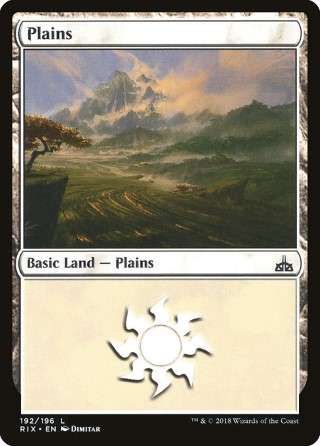
|
$0.39€0.100.03 | ||
|
12
Island
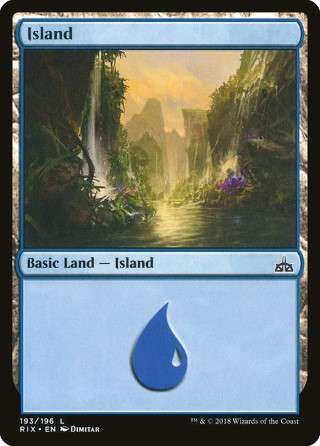
|
$0.76€0.110.03 | ||
|
13
Swamp
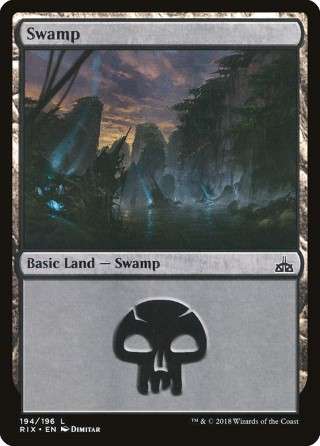
|
$0.60€0.020.03 | ||
|
13
Mountain
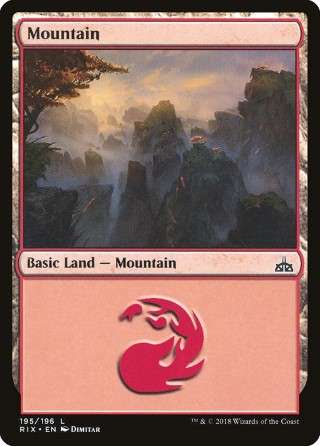
|
$1.68€0.090.04 | ||
|
12
Forest
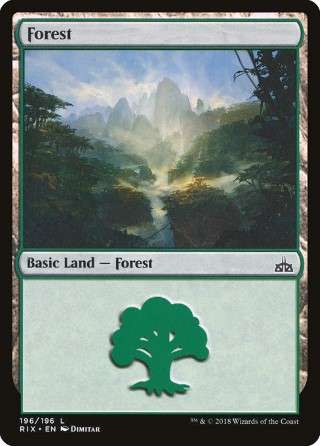
|
$1.06€0.240.03 | ||
| $0.25€0.100.03 | |||
| $1.00€0.780.02 | |||
| $2.71€1.840.02 | |||
| $1.69€1.440.02 | |||
| $0.15€0.060.03 | |||
| $0.18€0.090.03 | |||
| $0.19€0.090.03 | |||
| $0.24€0.120.03 | |||
| $8.71€9.660.17 | |||
| $10.99€9.690.07 | |||
| $14.00€13.630.29 | |||
| $13.03€12.080.96 | |||
| $15.79€15.080.92 | |||
| $11.93€10.480.15 | |||
| $11.79€10.460.88 | |||
| $17.54€14.800.76 | |||
| $10.67€9.980.24 | |||
| $16.51€15.220.17 | |||
| $0.20€0.020.03 | |||
| $0.25€0.040.03 | |||
| $1.15€1.020.02 | |||
| $0.18€0.090.03 | |||
| $0.20€0.090.03 | |||
| $0.19€0.100.03 | |||
| $0.20€0.070.03 | |||
| $0.15€0.050.03 | |||
(Simplified, true algorithm in MTGA not revealed by Wizards yet)
COMPARE WITH AETHERHUB COLLECTION
Add at least 100 different cards to your collection and set it as your Compare Collection on the manage page to see what cards from this deck you are missing.
COMPARE WITH MTG ARENA COLLECTION
Compare your MTG Arena Collection with AetherHub decklists or any other decks found on the web with the MTGA Assistant extension. Syncing your account will automatically upload your collection so you can see what cards you are missing right here.
Learn more Download For Windows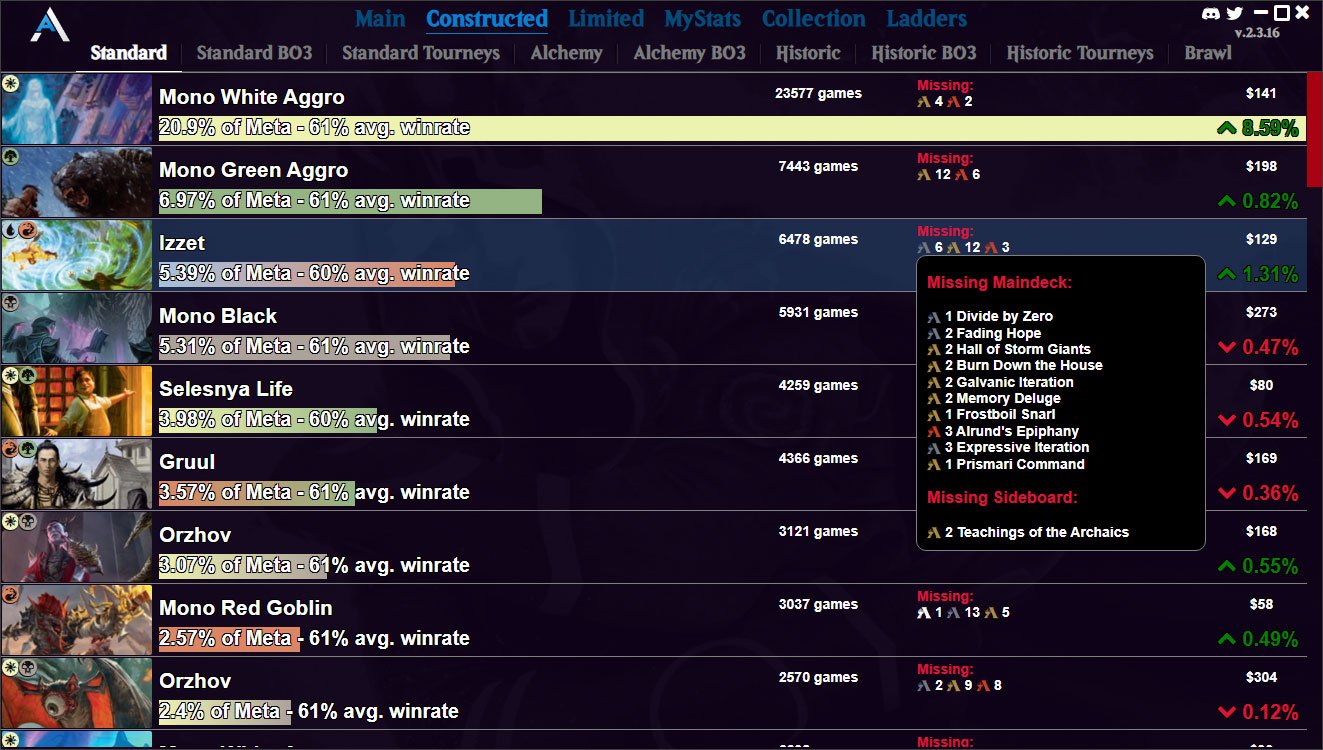
Deckbuilding Guide: Prismatic Format – 250 card Singleton
By AlifromCairo
Let us establish the format rules. 250 card singleton deck, with at least 20 cards of each color. Multicolored cards count toward each of the cards colors. For example, Knight of Autumn counts as a Green card and a White card towards the 20 card minimum. No cards are banned, every card is restricted to a single copy. No sideboards are used for this format.
Before we analyze a deckbuilding strategy, lets define the ways a player can lose a game of Magic. The first loss condition is drawing from an empty library. The second is reaching a life total of zero. With each player having a starting deck size of 250, we’ll take the first loss condition off the table, leaving a life total of zero as the primary loss condition.
Deck Archetypes
Every Magic deck built can be classified as one or more of the three archetypes, Combo, Aggro and Control.
Combo is the assembly of two or more cards that win the game instantly, or, one or more cards that generate an overwhelming advantage over the opponent. In today’s Magic, Combo is generally found on Planeswalker minus abilities.
Aggro decks run low converted mana cost creatures and spells that seek to deal 20 damage to the opponent as quickly as possible. Aggro decks primarily contain one and two converted mana cost creatures and spells. Aggro decks seek to apply consistent early pressure against the opponents life total, preferring to win through damage, usually by turn four or five.
Control decks seek to neutralize opponents early game threats and win late game with large converted mana cost creatures and spells, or, through combo. Control decks primarily contain two, three and four converted mana cost removal cards alongside five and six converted mana cost win conditions. Control decks usually spend the first four or five turns neutralizing the opponents threats and winning late game with high converted mana cost threats, or, combo.
Midrange is a strategy that exists between Aggro and Control and is usually a hybrid of both. Midrange generally uses medium cost creatures alongside efficient removal spells, to try and survive Aggro decks and win through medium cost creatures and spells. Midrange decks primarily contain three and four converted mana cost creatures and spells. Midrange usually spends the first few turns neutralizing opponents threats, then building board advantage on turns three and four, and seeks to win through combat based damage, usually by turn six.
How the deck archetypes relate to Prismatic Format – 250 card singleton.
Aggro decks require consistent early game pressure to be effective. With the deckbuilding requirements of a 250 card singleton deck, and, the requirement that the deck must include a minimum of 20 cards of each color, consistent early game pressure is very difficult to build around. The reason why Red Deck Wins and White Weenie are viable deckbuilding strategies in the 60 card format is because they consistently apply early game pressure to the opponents life total. Every game. Every time. The Prismatic Format deckbuilding restrictions, generally, do not allow for this consistent early game pressure. It is very typical for a Prismatic Format opening hand to include green and black cards alongside red and blue mana. This is not suitable for an Aggro strategy.
Pure combo, two or more cards that win the game instantly, is very difficult to build around in a 250 card prismatic singleton environment. The combo that we seek to include in our deck will primarily come from Planeswalker minus abilities. Planeswalkers are generally considered the strongest of the card types in the game and should be included in the decklist where possible.
Control is generally the strongest archetype to build around in the Prismatic Format. Because the opponent is under the same deckbuilding constraints as we are, they will not be able to consistently pressure our life total early which should gives us time to win through late game threats.
Deckbuilding Strategy
Our deck will need to include at minimum 20 of each color. This will end up being a boon to our deck rather than a burden as we will have the opportunity to draw upon the strengths of each color to build our deck. Below is a brief synopsis of what we will seek to include from each color.
White’s strengths come from healing, spot removal, mass removal and angels, flying threats.
Blue’s strengths come from card drawing, tempo, and big threats that are difficult to deal with.
Black’s strengths come from spot removal and demons, more flying threats.
Red’s strengths come from direct damage to the opponents life total that bypass the battlefield and dragons, more flying threats.
Green’s strengths come from mana fixing, ramp, card draw and large non-flying threats, preferably with trample.
Colorless cards strengths come from the fact that they are able to be cast with any color mana and provide ramp/fixing.
Our Deck
Next we need to require certain things from our deck. The main categories I’ll address in this guide are Threats, Removal, Draw, Healing and Fixing. We need to win with threats, remove our opponents threats, draw into our threats/removal, heal where possible and fix/ramp so we can complete our objectives sooner than the opponent.
Threats
We want our threats to have as much of an impact on the board state as possible. Our threats need to have high power/toughness ratios for the relative converted mana cost if it’s a creature, and, big game changing effects if they aren’t creatures.
Removal
Our opponents will be playing threats of their own and we need to not lose to them. Removal is our primary way of dealing with our opponents threats.
Draw
Nothing is worse than “top deck” mode. We need to include sufficient card draw in our deck, and, where possible, have that card draw stapled to other card types like threats/removal. While Surveil and Scry are not card draw, they are card selection and for the purposes of classification, I have included Surveil and Scry as Draw but only Secondary, not Primary.
Healing
Both players start the game with 20 health. Without healing, you are relegating all of the damage you take as essentially Infect damage. Even something as small as “gain 2 life” can make the difference between winning at 1 life and losing the game. Healing is very difficult to come by in the game and for the purposes of primary classification, I tried to included creatures with Lifelink as primarily healing. For instance, Lyra Dawnbringer is both a Threat and Healing. Because her healing is so great, in my opinion, I classified her as primarily a healing card, secondary a threat card.
Fixing
We need to fix/ramp. This is important. We will be playing six and seven converted mana cost cards, some will require double or even triple of a certain color type. Can’t play the cards if you don’t have the available mana to cast them. Fixing can also provide access to a color without having that color available on a land. Very big difference between “Tap: Add G to mana pool” and “Tap: Add one mana of any color to mana pool”. The first is ramp, the second is fixing. We will require as much fixing as possible without sacrificing our threat/removal ratios.
Another thing that I am not classifying in cards is their ability to spend unused mana each round, ie, mana dumps. Generally, the winner of each match is the one that was able to spend more mana than the opponent. Cards like Dawn of Hope [1W – Enchantment – Whenever you gain life you may pay 2. If you do, draw a card. 3W: Create a 1/1 white Soldier creature token with lifelink.] make a big difference over the course of a game. Having access to a mana dump allows for a huge advantage over an opponent that doesn’t have access to a mana dump. When you are building a deck with the cards in your collection, pay attention to cards that allow you to use untapped mana each round, especially mana dumps that allow you to use mana at the end of your opponents turn. Guildmages are another great source for using unspent mana each round.
Deck Analysis
Below is the decklist that I used this past weekend in the AdamantMTG Prismatic Format event. Each card is classified as either Threat, Removal, Draw, Healing or Fixing. Some cards (like Lyra Dawnbringer) have a Primary and Secondary classification. This is important as each card is fighting for a slot in the 250. Each card needs to pull in as much work as possible. Eviscerate is strictly a removal card. Vraska’s Contempt is both a removal card AND a healing card. This dual classification will bleed over into Deck Efficiency where a 250 card deck, essentially does the work of a 329 card deck but only requires 250 cards to do it.
Deck Efficiency
What is deck efficiency? It’s how much work a deck will output over a given series of games. For instance, my deck has 54 cards that are primarily classified as a Threat, however, 79 cards result in Threats. Example, Entrancing Melody. Entrancing Melody [UUX - Sorcery – Gain Control of target creature with converted mana cost X.] Entrancing Melody is primarily classified as a removal card, however, when the card resolves I have removed an opponents threat and gained a threat myself. I take their Lyra, they are minus one Lyra (Removal) and I am plus one Lyra (Threat). Let’s take another example, Reclamation Sage. The purpose of Reclamation Sage is not a three converted mana cost 2/1 creature. The purpose of Reclamation Sage is to remove my opponents problematic artifacts and enchantments. When Reclamation Sage enters the battlefield, if I destroy their Simic Locket, I have removed one of their cards (Removal) and gained a Threat, a 2/1 body. It’s cards that perform more than one function that help lead to deck efficiency. 7% of the cards in my deck are in there for solely drawing cards, however, 21% of my deck draw one or more cards. Hydroid Krasis is a high impact card, he is technically a Threat, Healing and Draw all in one card. Due to the rarity of healing, I have him classified primarily as a healing card, card draw secondary. I view the Threat side of him as a freebie.
Lands
Don’t get greedy. The first thing I do when I help people in my playgroup out with their deckbuilding is analyze their land count. Having a low land count leads to increased mulligans and “mana screws”. Personally, I shoot for between 40 and 45% mana when building a non-aggro deck. I want the ability to cast my cards and not missing land drops is critical to that end. Having a higher land count also helps with your mana dumps and gives you the ability to pump out an extra token with Dawn of Hope. Having excess lands also help with X spells like Banefire and Electrodominance.
THREATS
1 Doom Whisperer (GRN) 69
1 Teferi, Hero of Dominaria (DAR) 207
1 Ral, Izzet Viceroy (GRN) 195
1 Nicol Bolas, the Ravager (M19) 218
1 Muldrotha, the Gravetide (DAR) 199
1 Djinn of Wishes (M19) 52
1 Sphinx of Foresight (RNA) 55
1 Nezahal, Primal Tide (RIX) 45
1 Etali, Primal Storm (RIX) 100
1 Niv-Mizzet, Parun (GRN) 192
1 Journey to Eternity (RIX) 160
1 Chamber Sentry (GRN) 232
1 Liliana, Dreadhorde General (WAR) 97
1 Resplendent Angel (M19) 34
1 Ajani, Adversary of Tyrants (M19) 3
1 Angel of Grace (RNA) 1
1 Trostani Discordant (GRN) 208
1 Dovin, Grand Arbiter (RNA) 167
1 Azor, the Lawbringer (RIX) 154
1 Leonin Warleader (M19) 23
1 Pelakka Wurm (M19) 192
1 Trapjaw Tyrant (RIX) 29
1 Dream Eater (GRN) 38
1 Ravager Wurm (RNA) 200
1 Skarrgan Hellkite (RNA) 114
1 Vivien Reid (M19) 208
1 Rakdos, the Showstopper (RNA) 199
1 Zacama, Primal Calamity (RIX) 174
1 Warrant // Warden (RNA) 230
1 Response // Resurgence (GRN) 229
1 Conclave Guildmage (GRN) 162
1 Spawn of Mayhem (RNA) 85
1 Bone Dragon (M19) 88
1 Rekindling Phoenix (RIX) 111
1 Verix Bladewing (DAR) 149
1 Carnage Tyrant (XLN) 179
1 Multani, Yavimaya's Avatar (DAR) 174
1 Seraph of the Scales (RNA) 205
1 Captive Audience (RNA) 160
1 Aurelia, Exemplar of Justice (GRN) 153
1 Darigaaz Reincarnated (DAR) 193
1 Palladia-Mors, the Ruiner (M19) 219
1 Shalai, Voice of Plenty (DAR) 35
1 Zetalpa, Primal Dawn (RIX) 30
1 God-Eternal Kefnet (WAR) 53
1 Gravewaker (M19) 293
1 Tilonalli's Summoner (RIX) 121
1 Demanding Dragon (M19) 135
1 Tendershoot Dryad (RIX) 147
1 Ethereal Absolution (RNA) 170
1 Nullhide Ferox (GRN) 138
1 Biogenic Ooze (RNA) 122
1 Zegana, Utopian Speaker (RNA) 214
1 Helm of the Host (DAR) 217
REMOVAL
1 Price of Fame (GRN) 83
1 Find // Finality (GRN) 225
1 Hypothesizzle (GRN) 178
1 Vraska's Contempt (XLN) 129
1 Kaya's Wrath (RNA) 187
1 Ravenous Chupacabra (RIX) 82
1 Bounty Agent (GRN) 2
1 Siege-Gang Commander (DAR) 143
1 Reclamation Sage (M19) 196
1 Sprouting Renewal (GRN) 145
1 Profane Procession (RIX) 166
1 Hostage Taker (XLN) 223
1 Thrash // Threat (RNA) 229
1 Fight with Fire (DAR) 119
1 Meteor Golem (M19) 241
1 Entrancing Melody (XLN) 55
1 Take Vengeance (M19) 40
1 Lightning Strike (M19) 152
1 Settle the Wreckage (XLN) 34
1 Cleansing Nova (M19) 9
1 Murder (M19) 110
1 Cast Down (DAR) 81
1 Star of Extinction (XLN) 161
1 Electrodominance (RNA) 99
1 Banefire (M19) 130
1 Status // Statue (GRN) 230
1 Deputy of Detention (RNA) 165
1 Hieromancer's Cage (M19) 14
1 Eviscerate (DAR) 91
1 Ionize (GRN) 179
1 Bedevil (RNA) 157
1 Assassin's Trophy (GRN) 152
1 Bright Reprisal (XLN) 7
1 Transmogrifying Wand (M19) 247
1 Walk the Plank (XLN) 130
1 Arrester's Admonition (RNA) 31
1 Conclave Tribunal (GRN) 6
1 Blink of an Eye (DAR) 46
1 Crashing Tide (RIX) 34
1 Get the Point (RNA) 176
1 Ixalan's Binding (XLN) 17
1 Mortify (RNA) 192
DRAW
1 Sphinx's Insight (RNA) 209
1 The Immortal Sun (RIX) 180
1 House Guildmage (GRN) 177
1 Underrealm Lich (GRN) 211
1 Karn, Scion of Urza (DAR) 1
1 Thief of Sanity (GRN) 205
1 Expansion // Explosion (GRN) 224
1 Emergency Powers (RNA) 169
1 Mystic Archaeologist (M19) 63
1 Precognitive Perception (RNA) 45
1 Experimental Frenzy (GRN) 99
1 League Guildmage (GRN) 185
1 Sift (M19) 72
1 Arcane Encyclopedia (M19) 227
1 Chemister's Insight (GRN) 32
1 Notion Rain (GRN) 193
1 Divination (M19) 51
1 Dryad Greenseeker (M19) 178
HEALING
1 Hydroid Krasis (RNA) 183
1 Dawn of Hope (GRN) 8
1 Senate Guildmage (RNA) 204
1 Knight of Autumn (GRN) 183
1 Lyra Dawnbringer (DAR) 26
1 Inspiring Cleric (XLN) 16
1 Elenda, the Dusk Rose (RIX) 157
1 Swarm Guildmage (GRN) 201
1 Ritual of Rejuvenation (XLN) 32
1 Revitalize (M19) 35
FIXING
1 Azorius Locket (RNA) 231
1 Orzhov Locket (RNA) 236
1 Dimir Locket (GRN) 234
1 Izzet Locket (GRN) 238
1 Rakdos Locket (RNA) 237
1 Golgari Locket (GRN) 237
1 Gruul Locket (RNA) 234
1 Boros Locket (GRN) 231
1 Selesnya Locket (GRN) 240
1 Simic Locket (RNA) 240
1 Leyline Prowler (WAR) 202
1 Gift of Paradise (M19) 184
1 Incubation Druid (RNA) 131
1 Draconic Disciple (M19) 215
1 Atzocan Seer (RIX) 153
1 Paradise Druid (WAR) 171
1 Drover of the Mighty (XLN) 187
1 Circuitous Route (GRN) 125
1 Chromatic Lantern (GRN) 233
1 Gilded Lotus (DAR) 215
LAND
1 Azorius Guildgate (RNA) 243
1 Dimir Guildgate (GRN) 245
1 Rakdos Guildgate (RNA) 255
1 Izzet Guildgate (GRN) 251
1 Orzhov Guildgate (RNA) 252
1 Golgari Guildgate (GRN) 248
1 Gruul Guildgate (RNA) 249
1 Boros Guildgate (GRN) 243
1 Selesnya Guildgate (GRN) 255
1 Simic Guildgate (RNA) 257
1 Gateway Plaza (RNA) 247
1 Hallowed Fountain (RNA) 251
1 Godless Shrine (RNA) 248
1 Watery Grave (GRN) 259
1 Steam Vents (GRN) 257
1 Blood Crypt (RNA) 245
1 Overgrown Tomb (GRN) 253
1 Stomping Ground (RNA) 259
1 Sacred Foundry (GRN) 254
1 Temple Garden (GRN) 258
1 Breeding Pool (RNA) 246
1 Unknown Shores (XLN) 259
1 Rupture Spire (M19) 255
1 Glacial Fortress (XLN) 255
1 Isolated Chapel (DAR) 241
1 Drowned Catacomb (XLN) 253
1 Sulfur Falls (DAR) 247
1 Dragonskull Summit (XLN) 252
1 Woodland Cemetery (DAR) 248
1 Rootbound Crag (XLN) 256
1 Clifftop Retreat (DAR) 239
1 Sunpetal Grove (XLN) 257
1 Hinterland Harbor (DAR) 240
1 Meandering River (M19) 253
1 Forsaken Sanctuary (M19) 250
1 Submerged Boneyard (M19) 257
1 Highland Lake (RIX) 189
1 Cinder Barrens (M19) 248
1 Foul Orchard (RIX) 188
1 Timber Gorge (M19) 258
1 Stone Quarry (M19) 256
1 Tranquil Expanse (M19) 259
1 Woodland Stream (M19) 260
13 Plains (RIX) 192
12 Island (RIX) 193
13 Swamp (RIX) 194
13 Mountain (RIX) 195
12 Forest (RIX) 196
Closing
Thank you for reading this article and choosing to participate in this fun, new and exciting way to play the game we all love! If you have any questions or comments, feel free to email me at alifromcairo01@gmail.com.
Latest Articles
| 42 | 36 | 68 | 41 | 0 |
|---|---|---|---|---|
| 0 | 0 | 0 | 0 | 0 |
| Symbols | Percentage | Lands |
|---|

